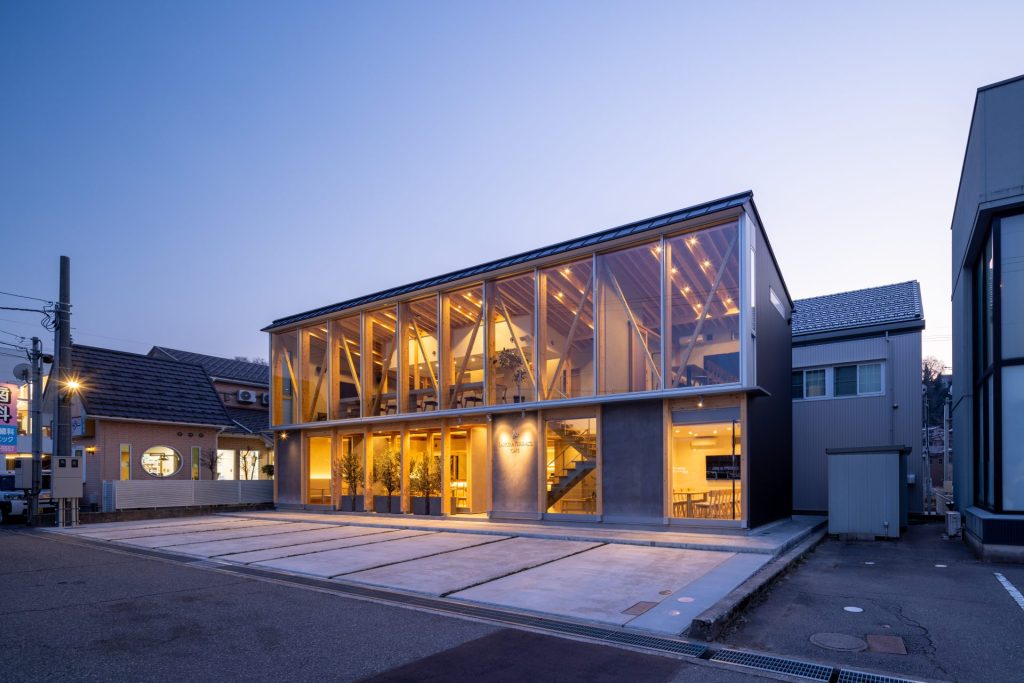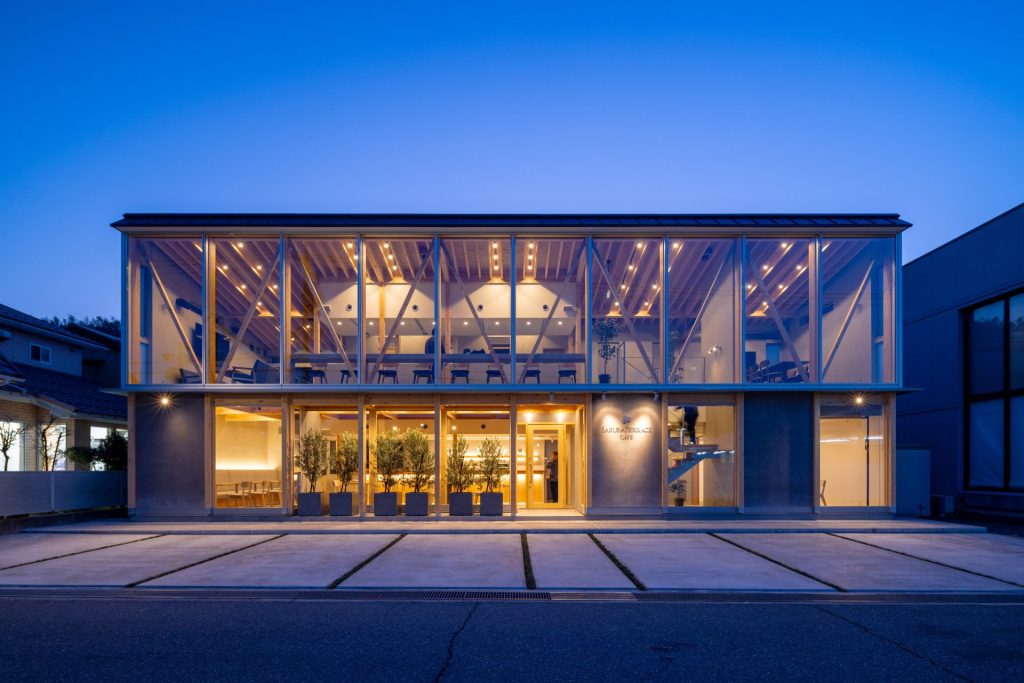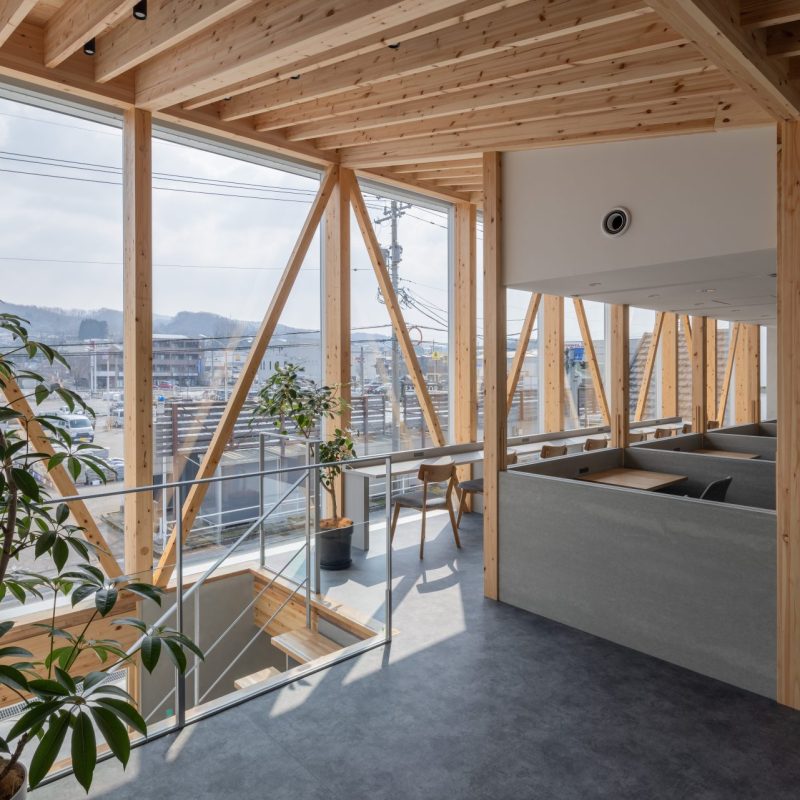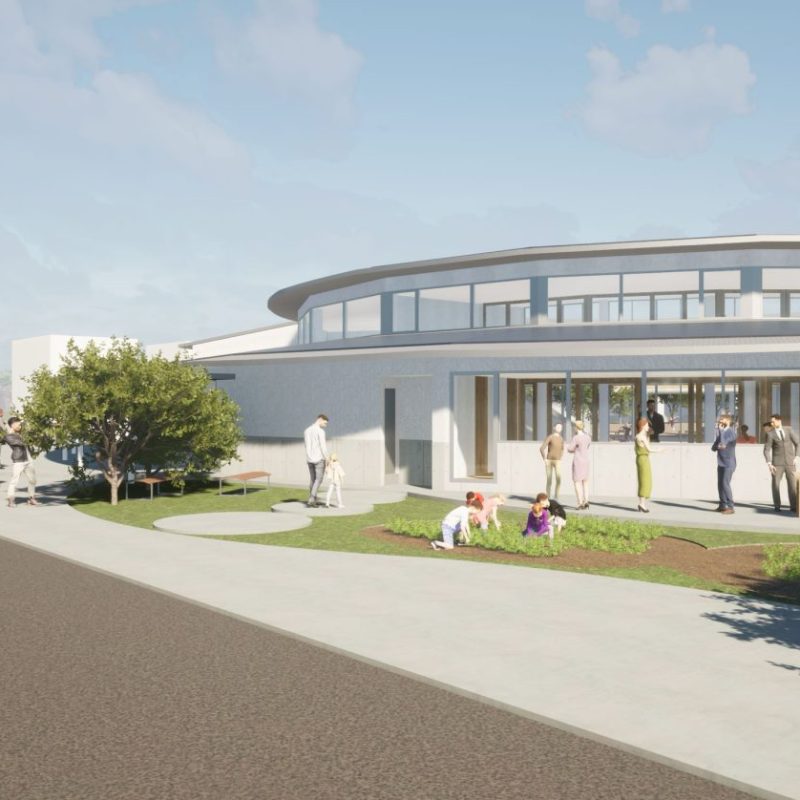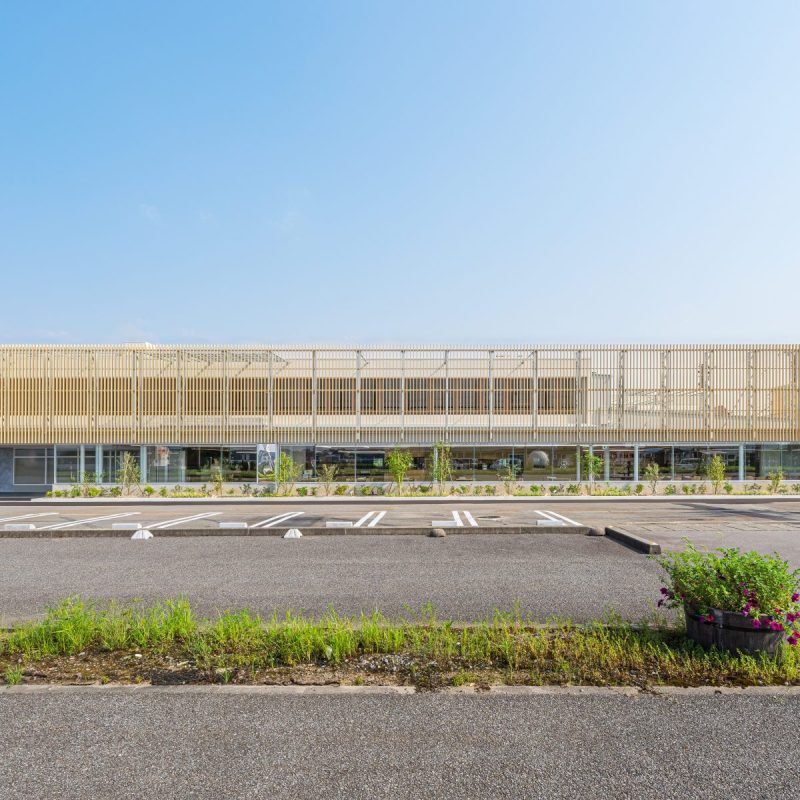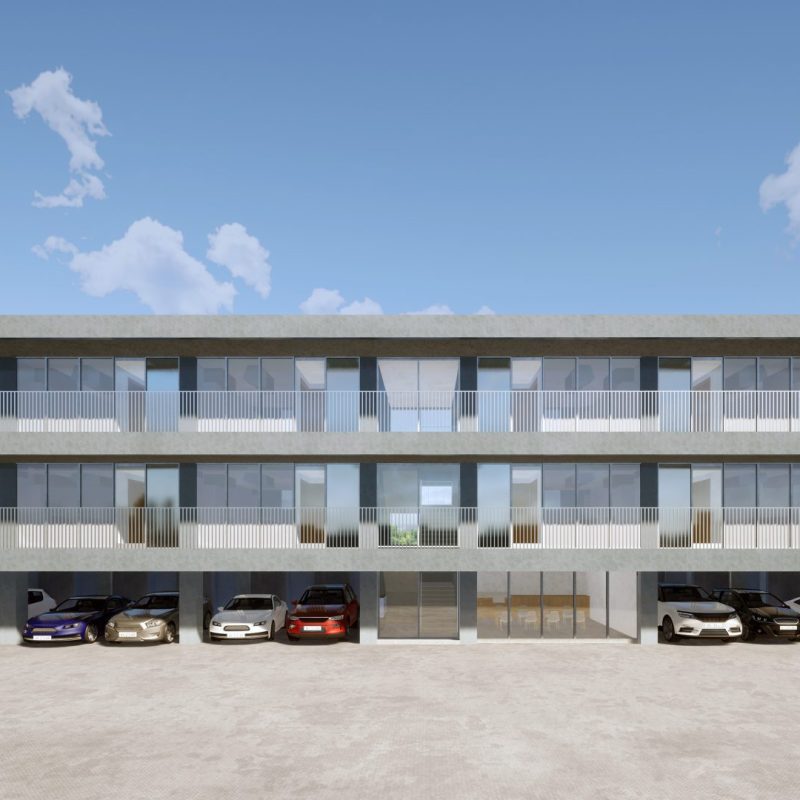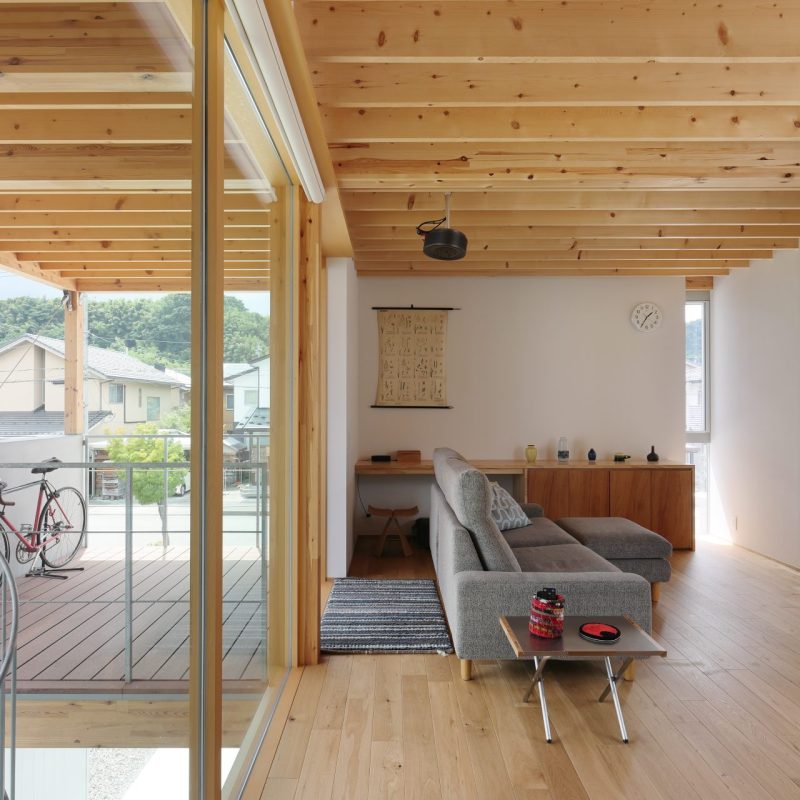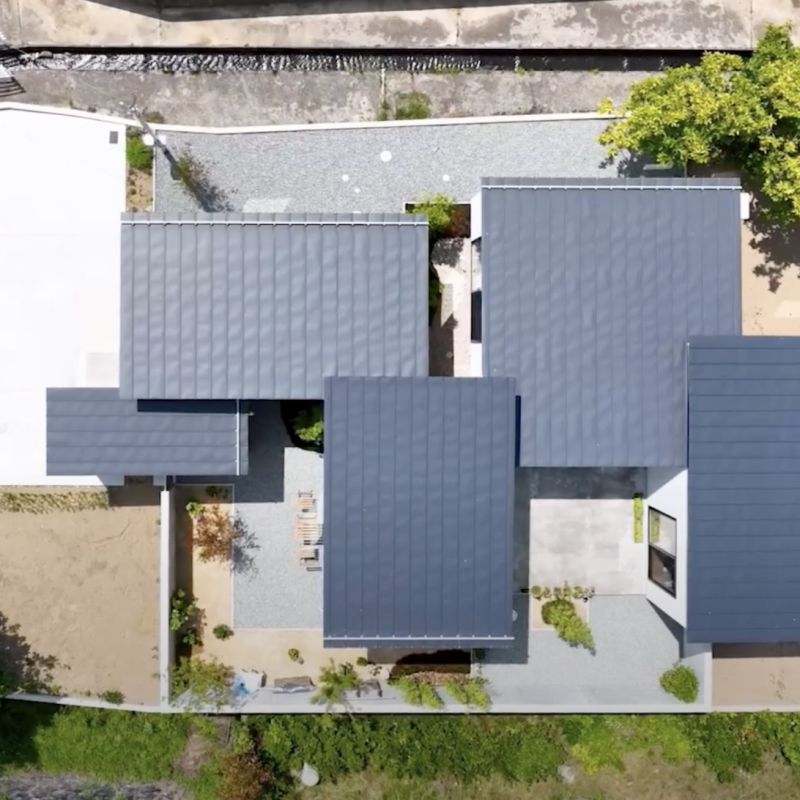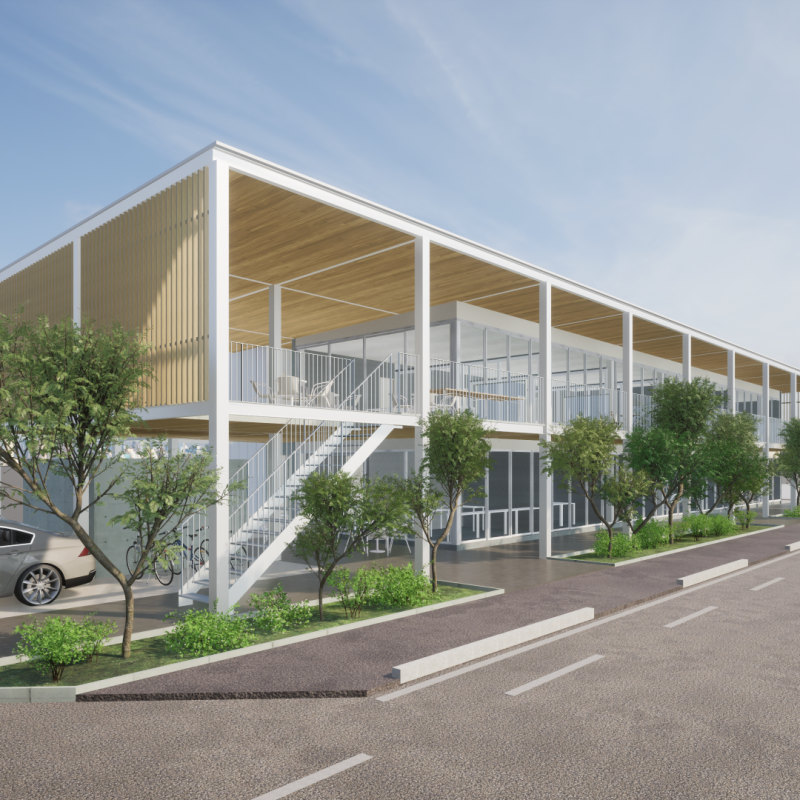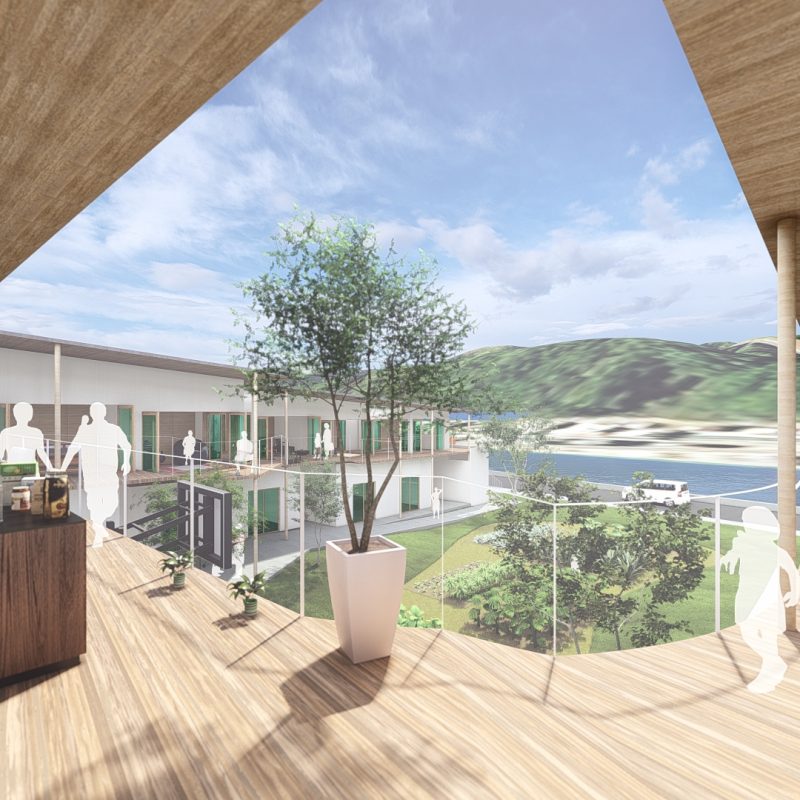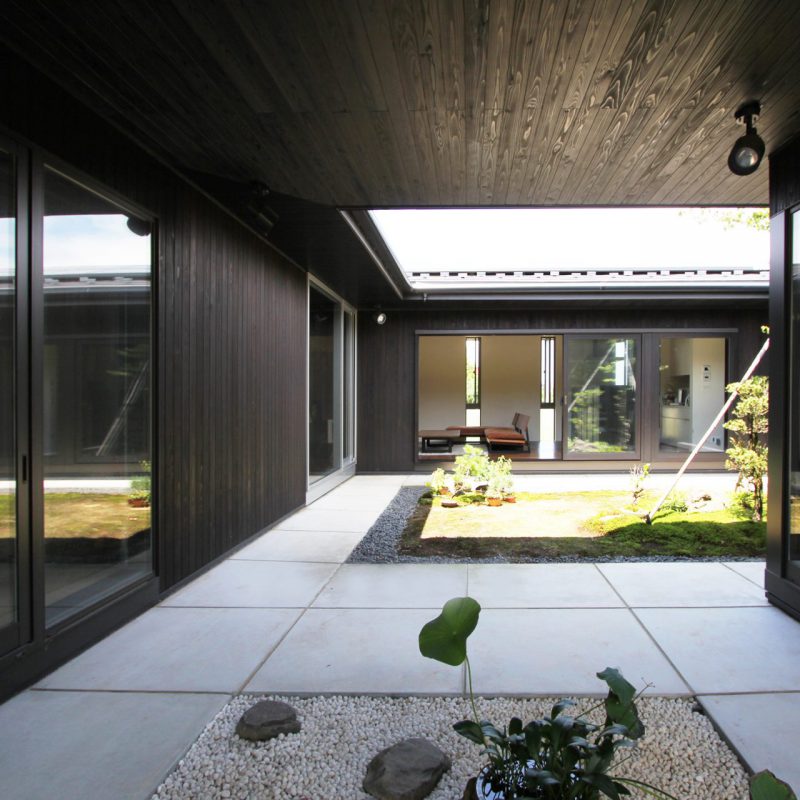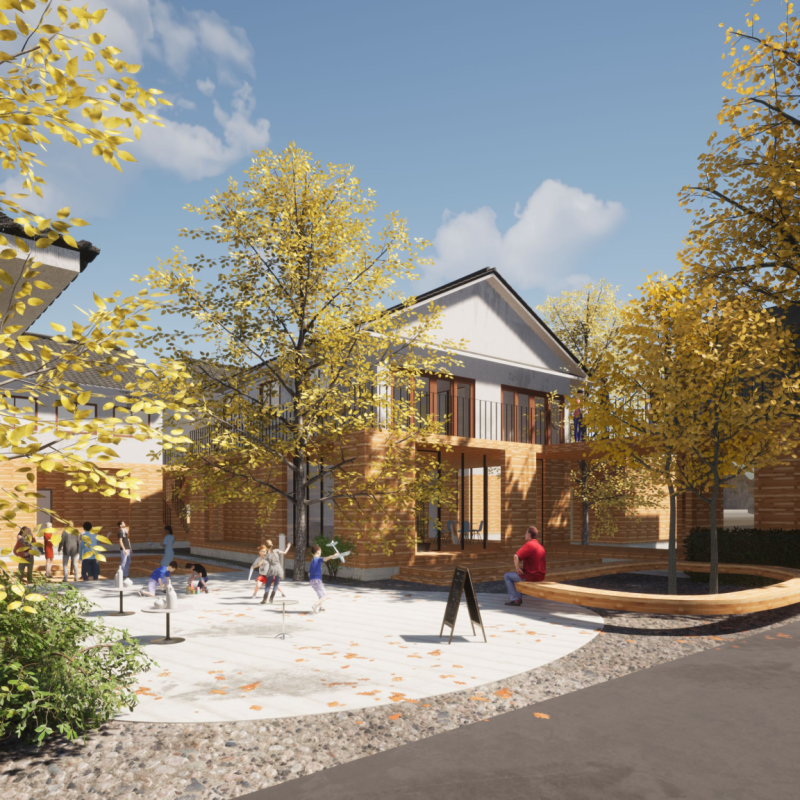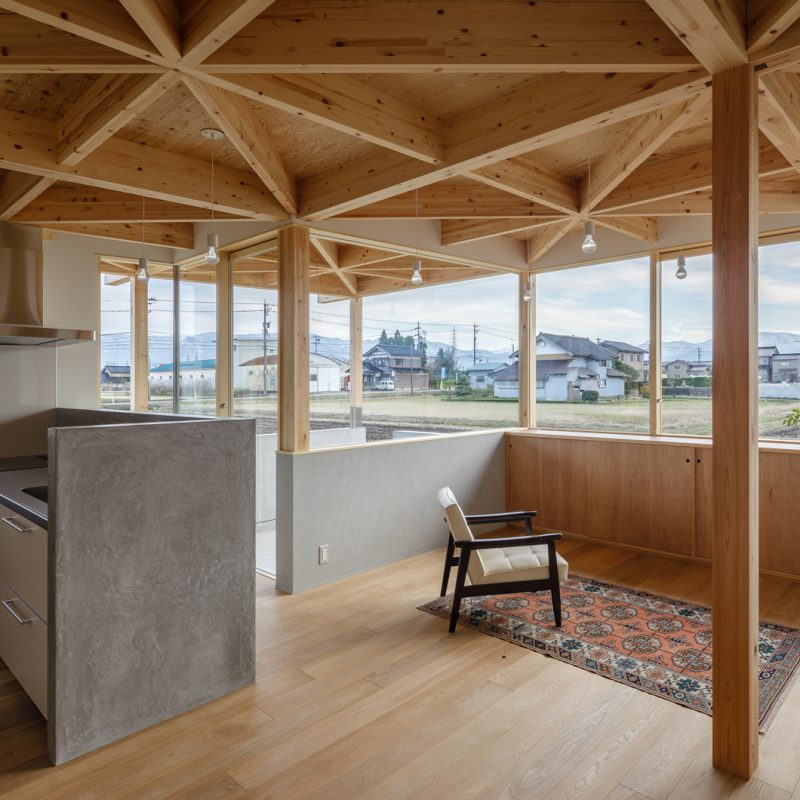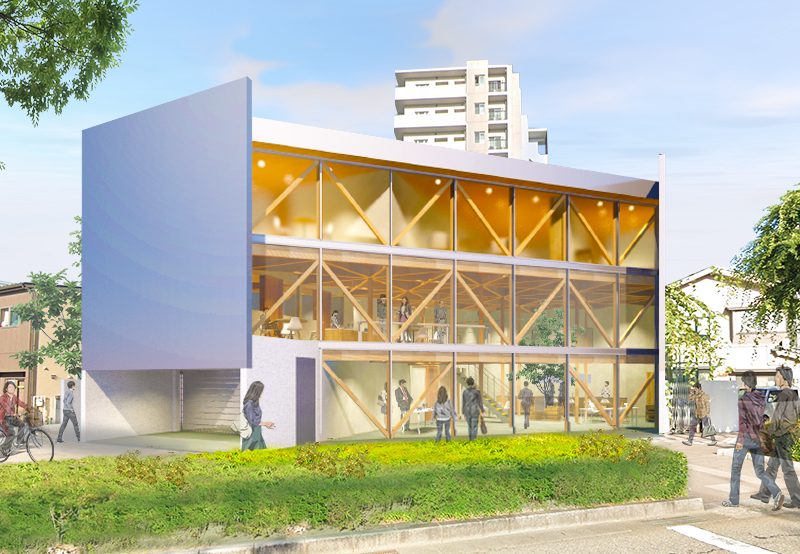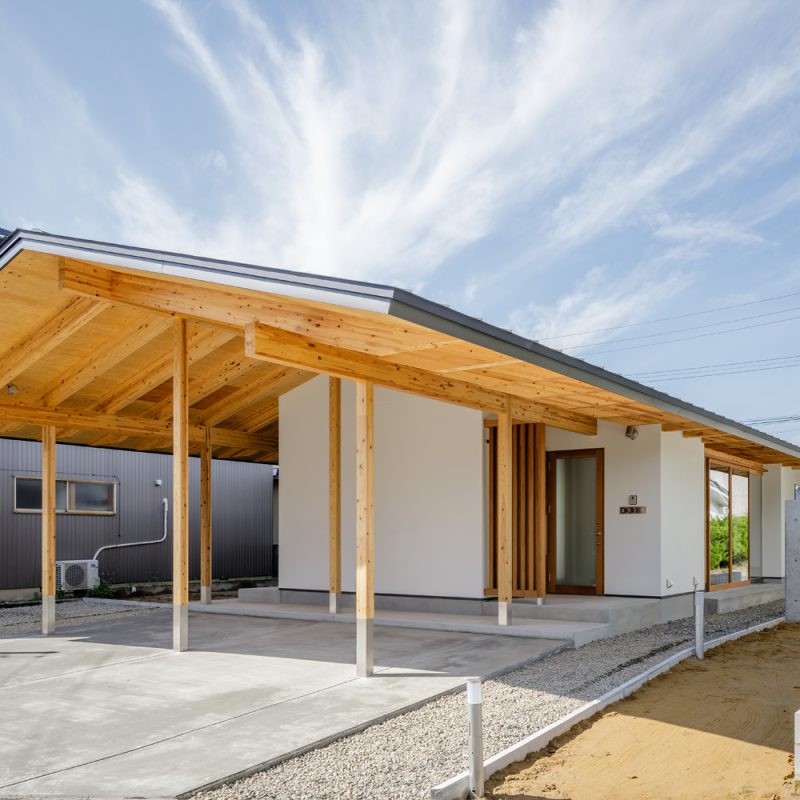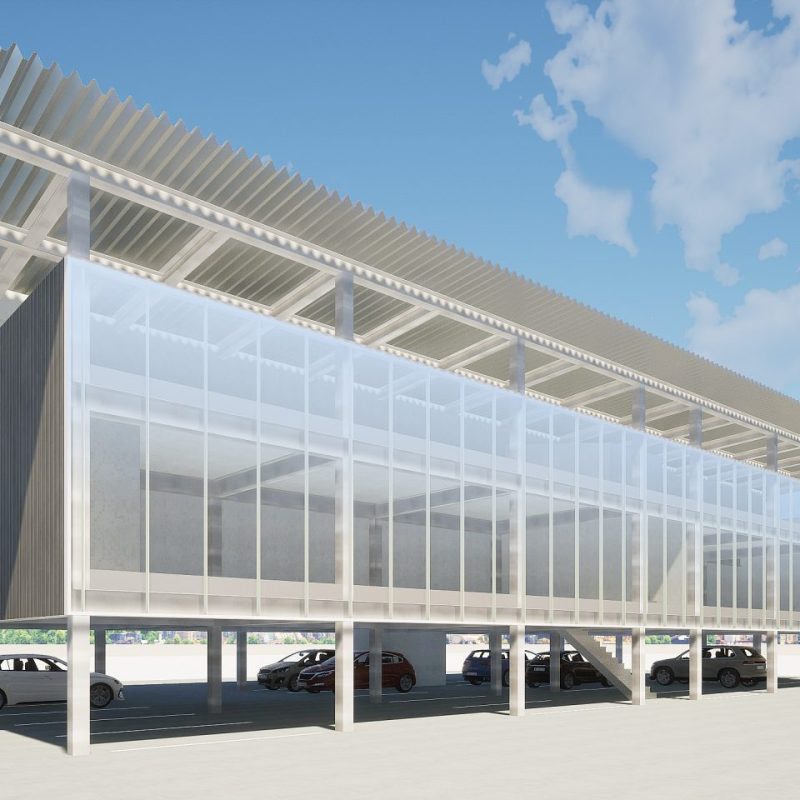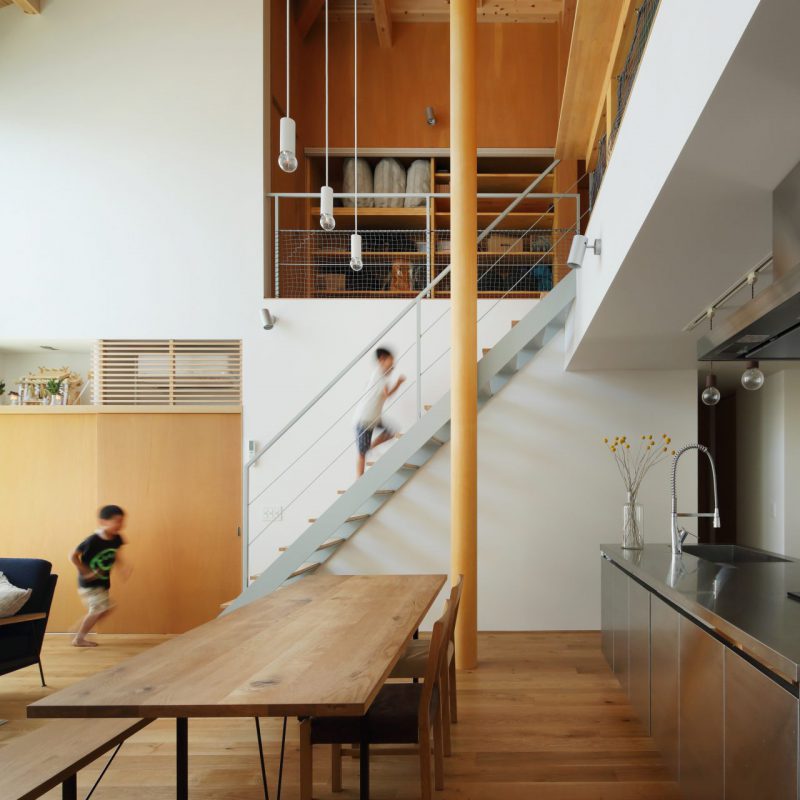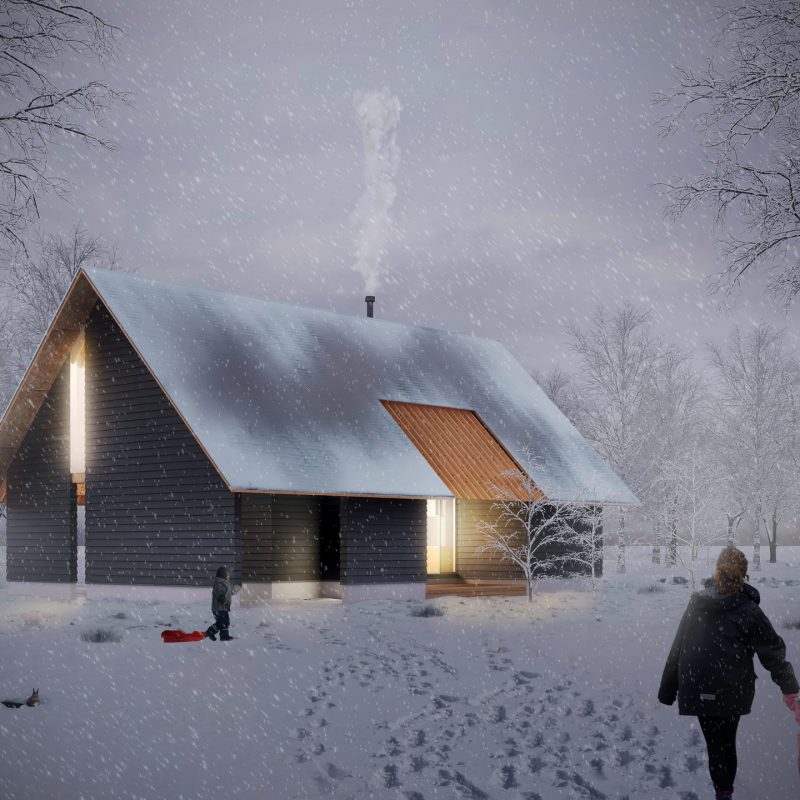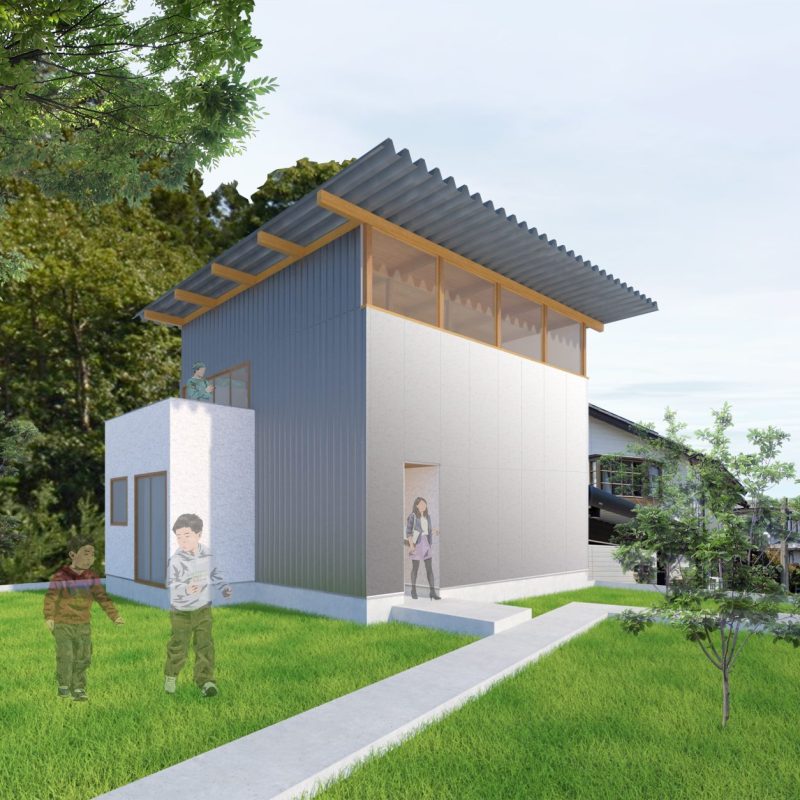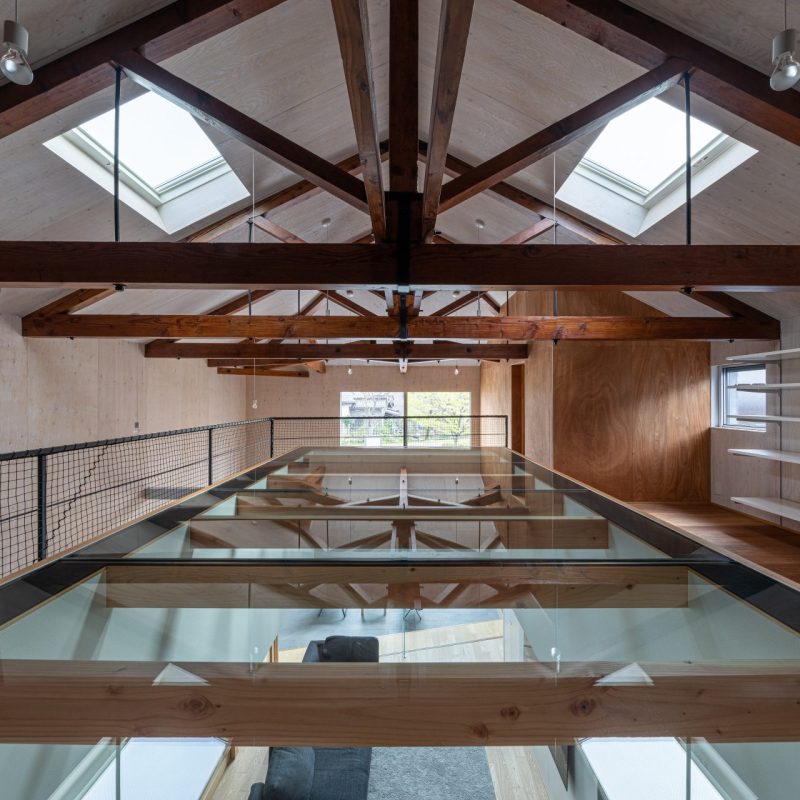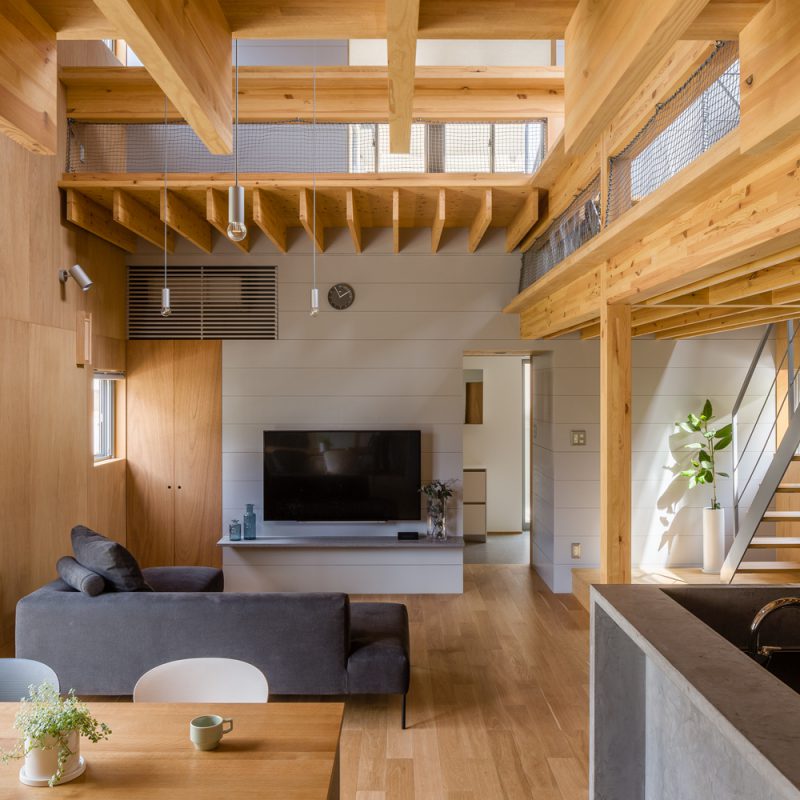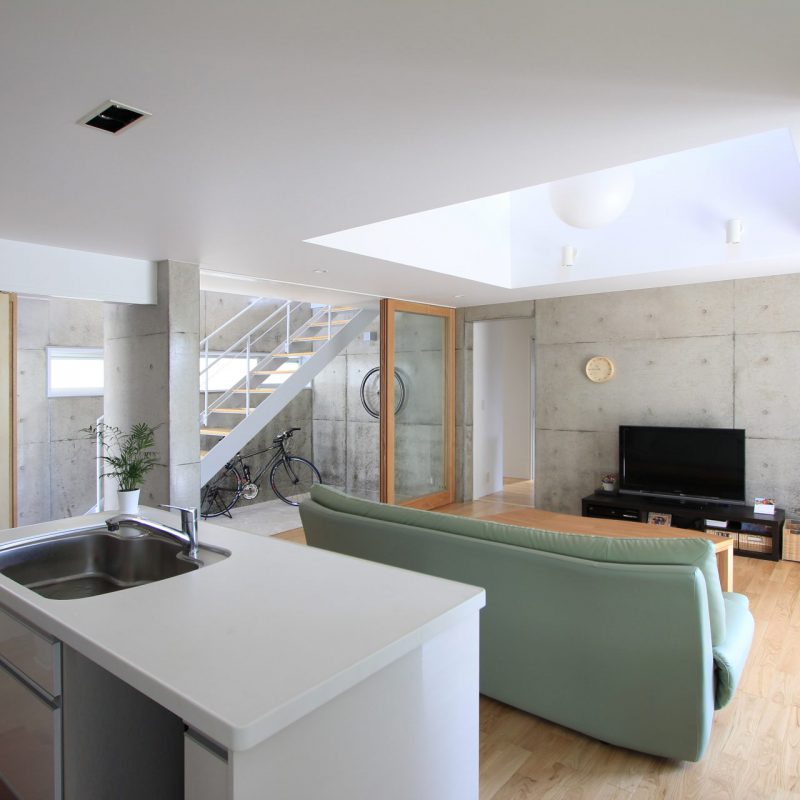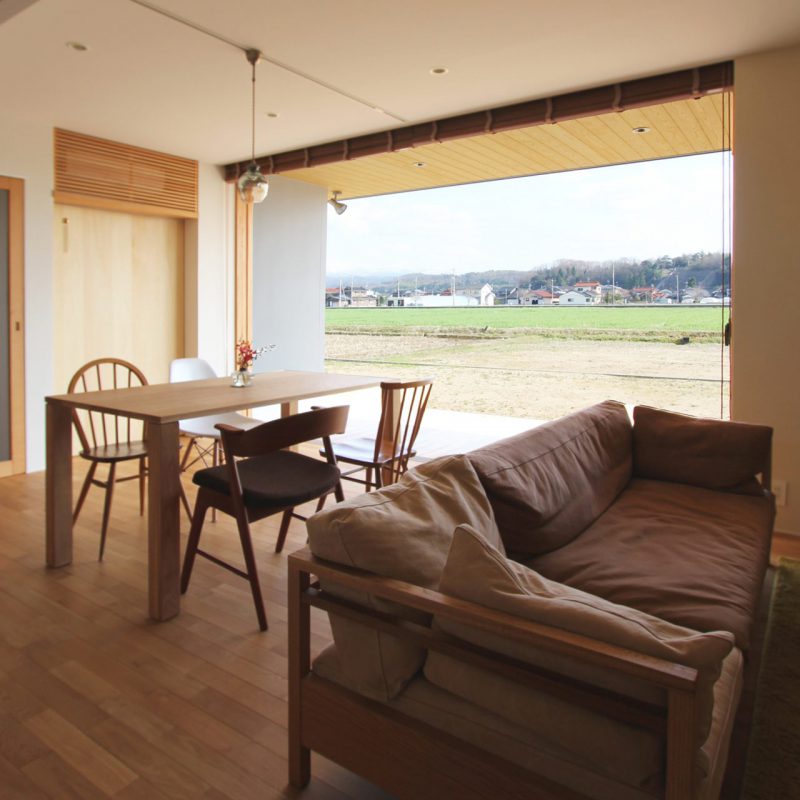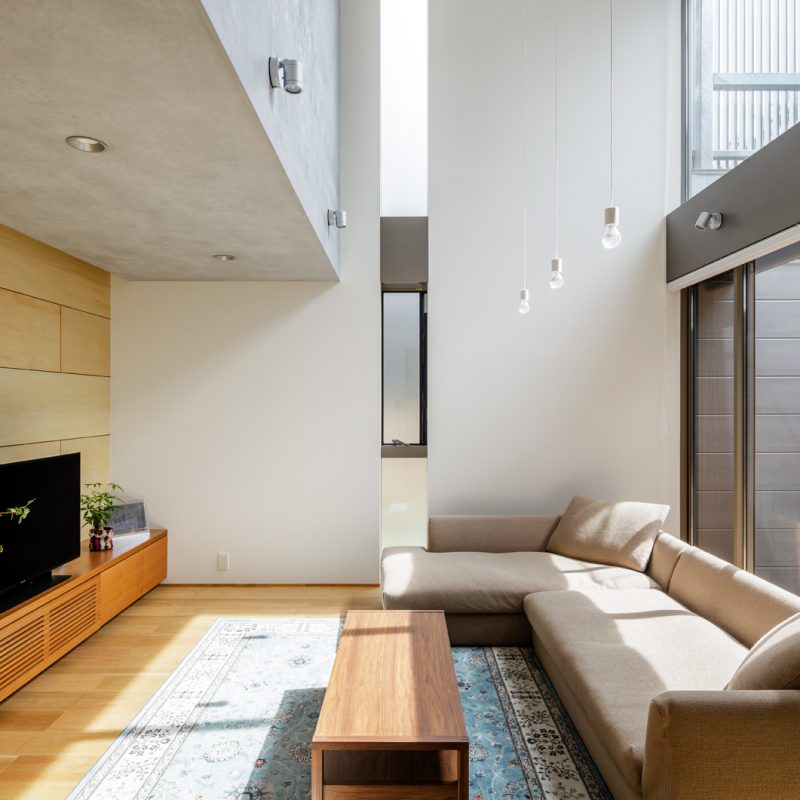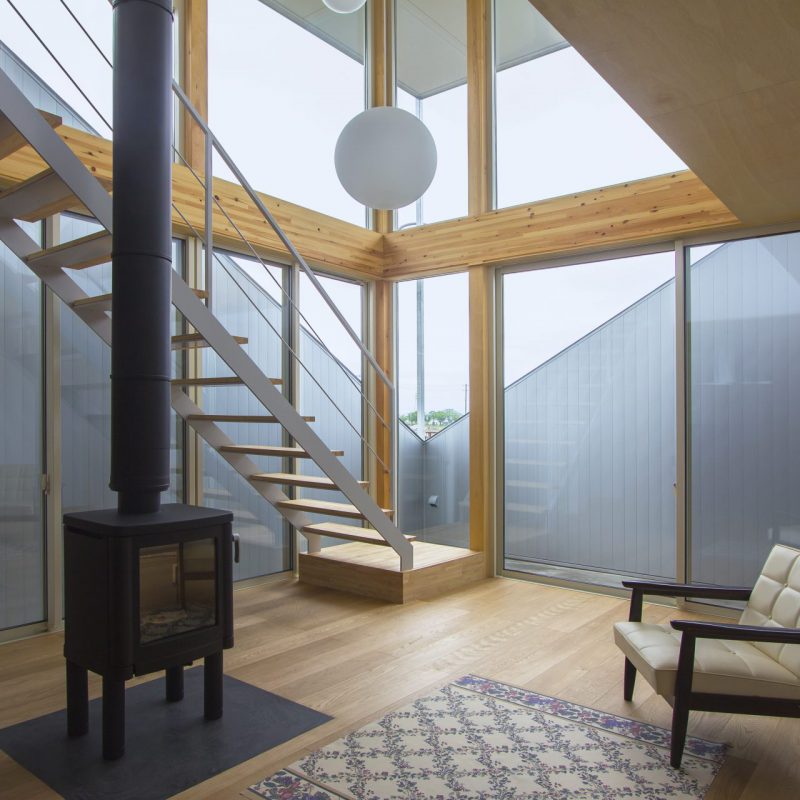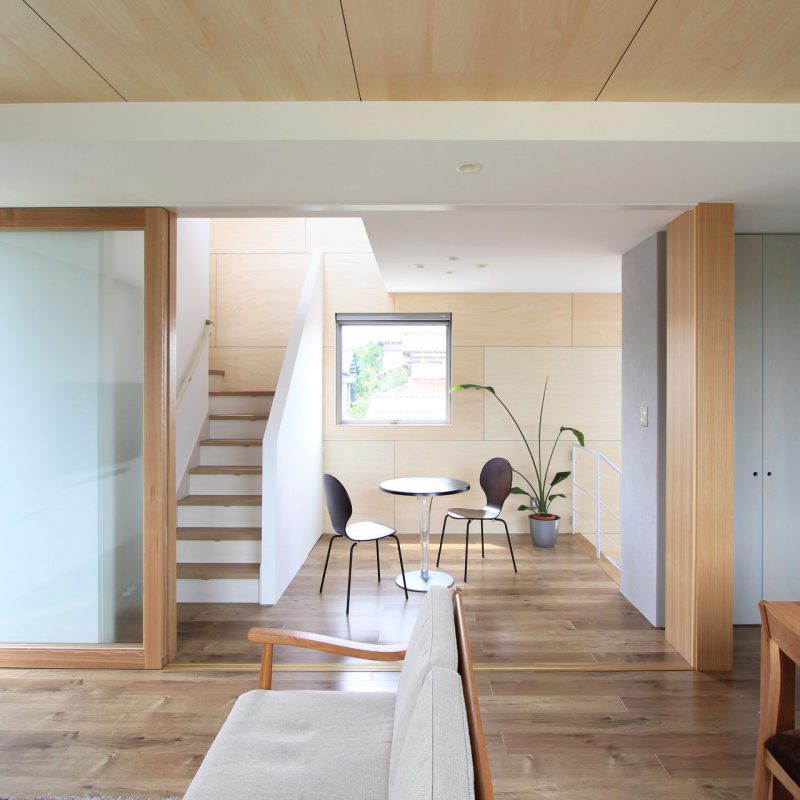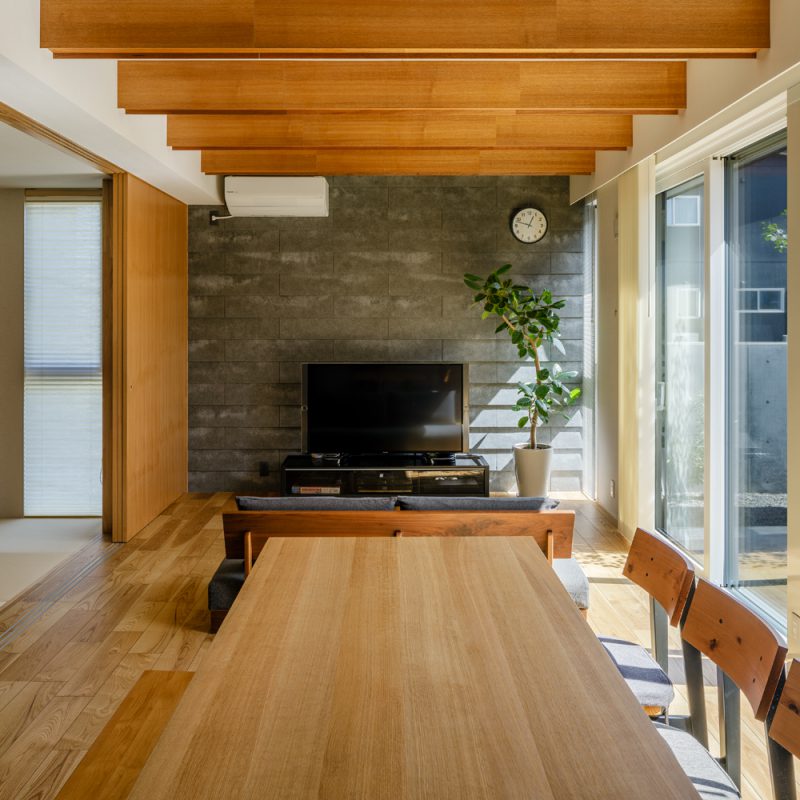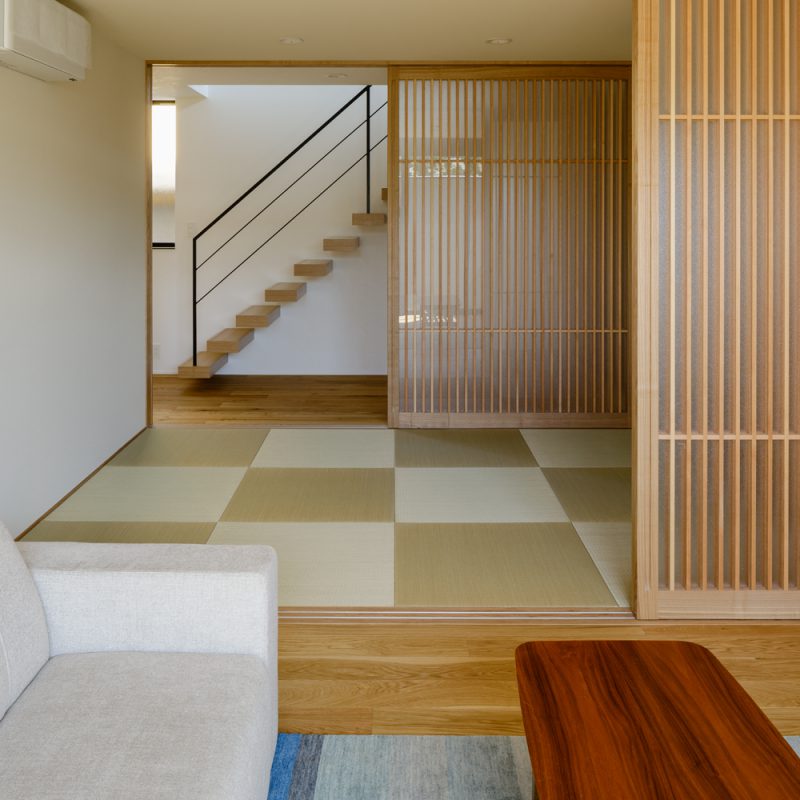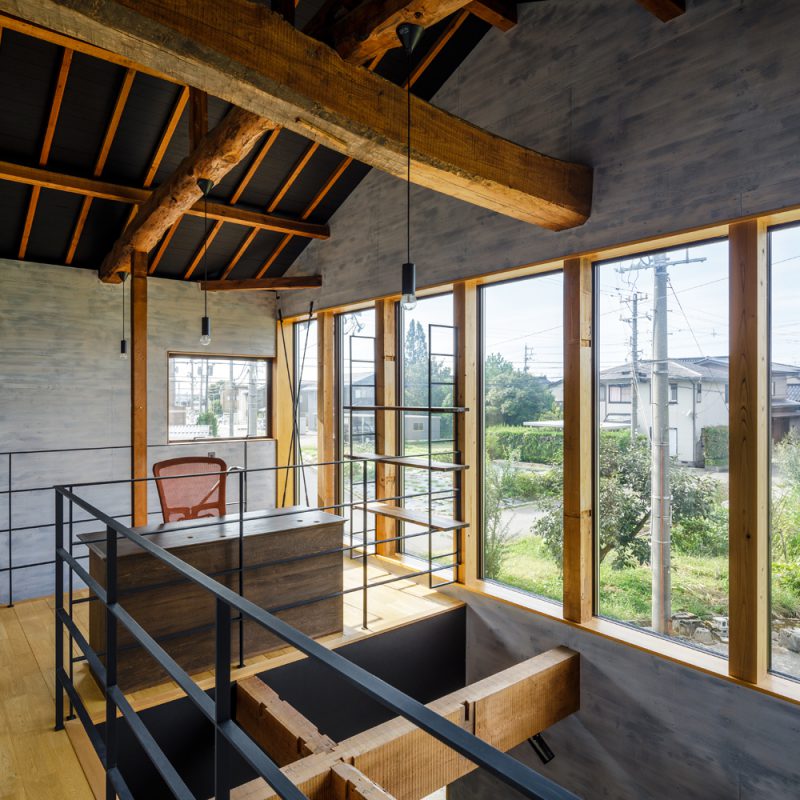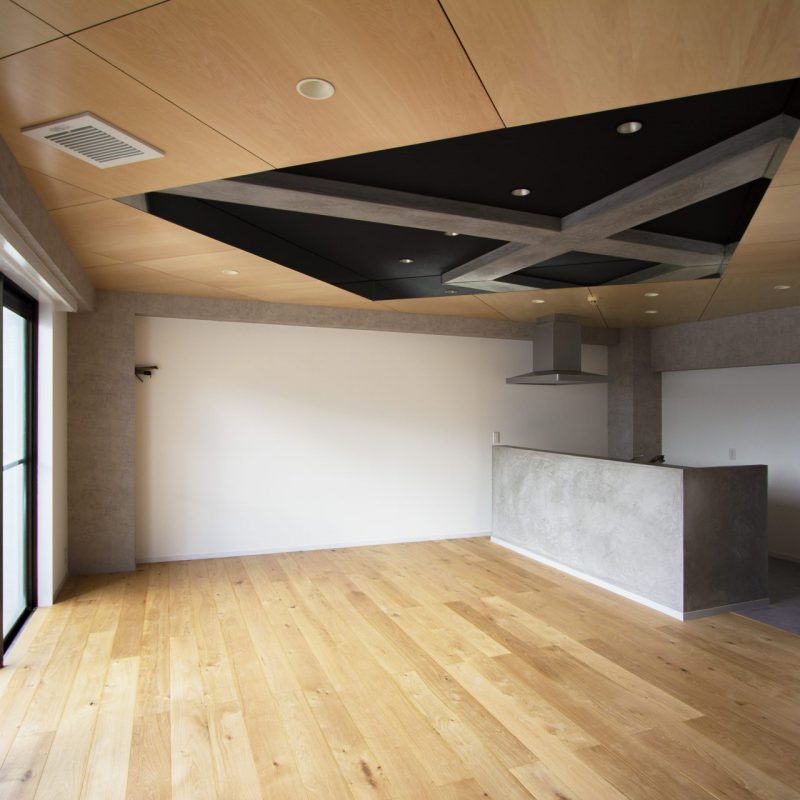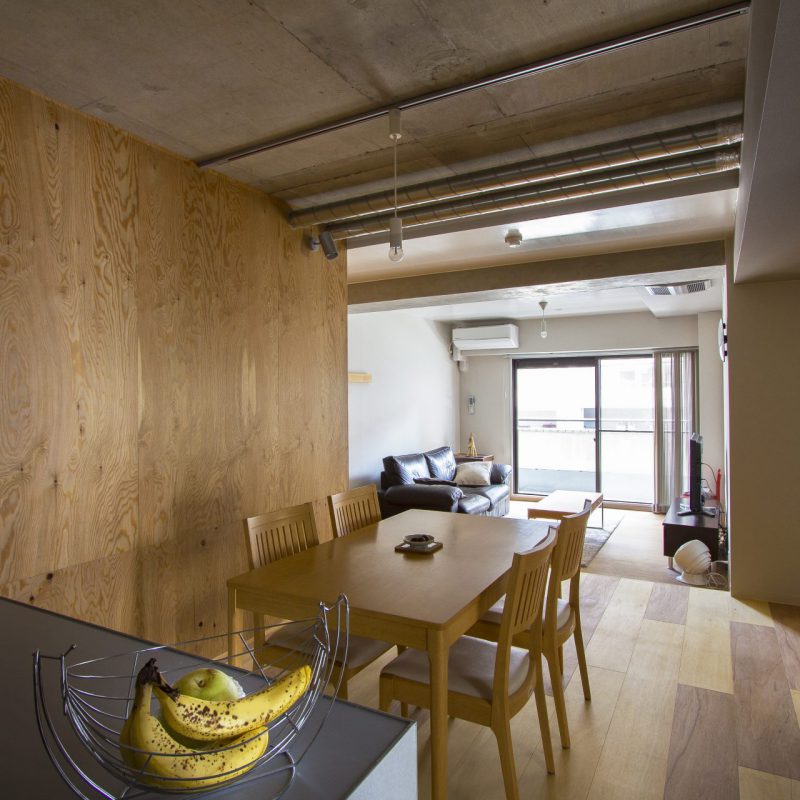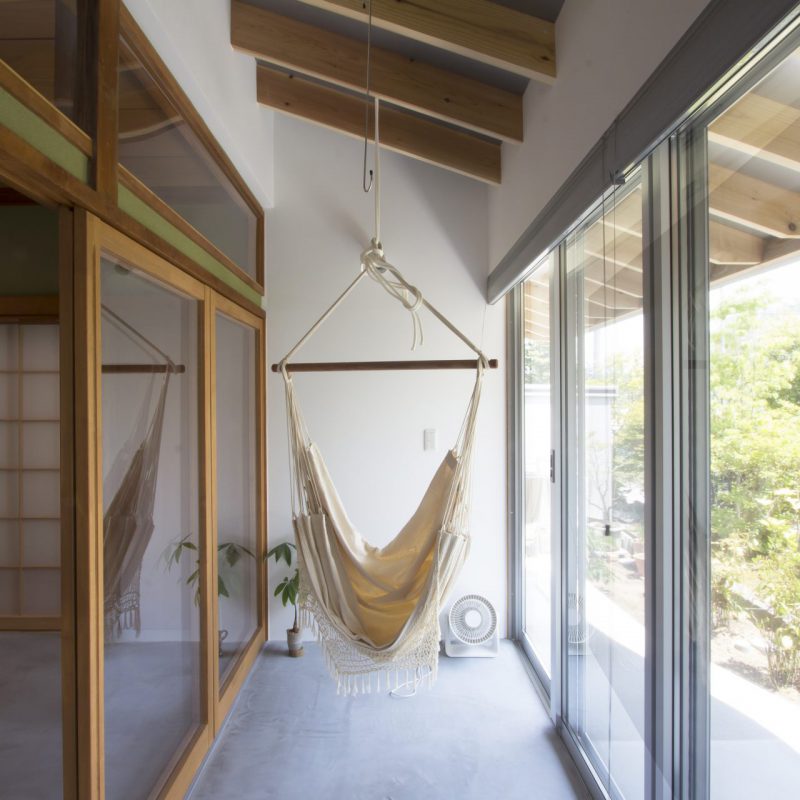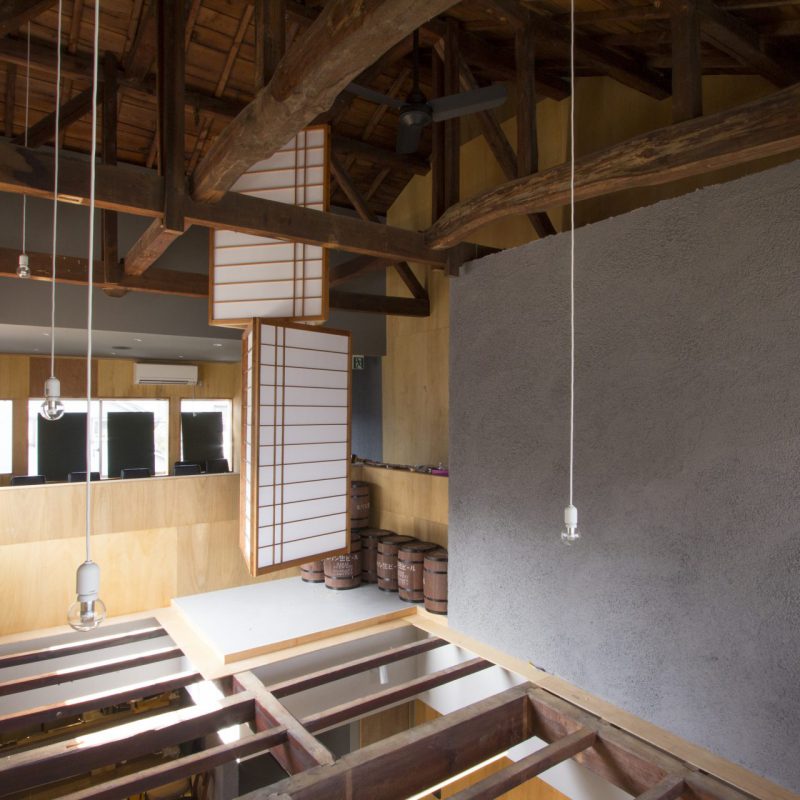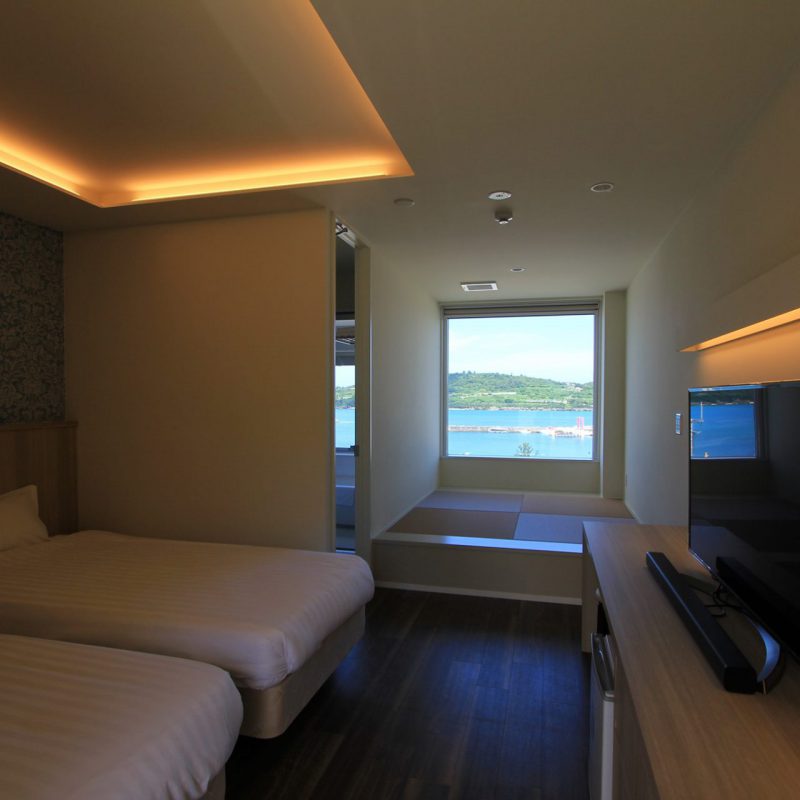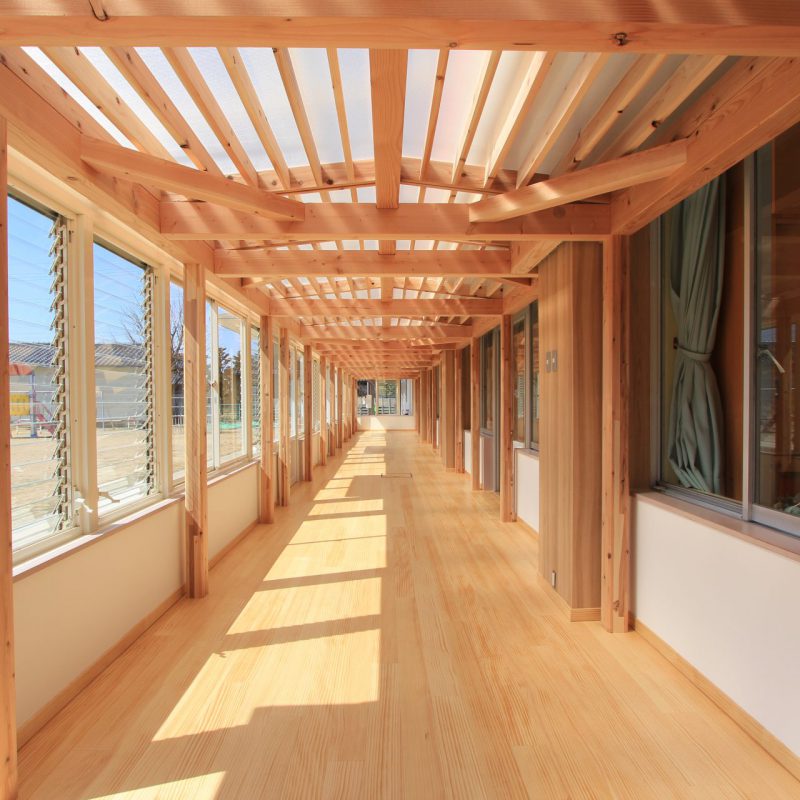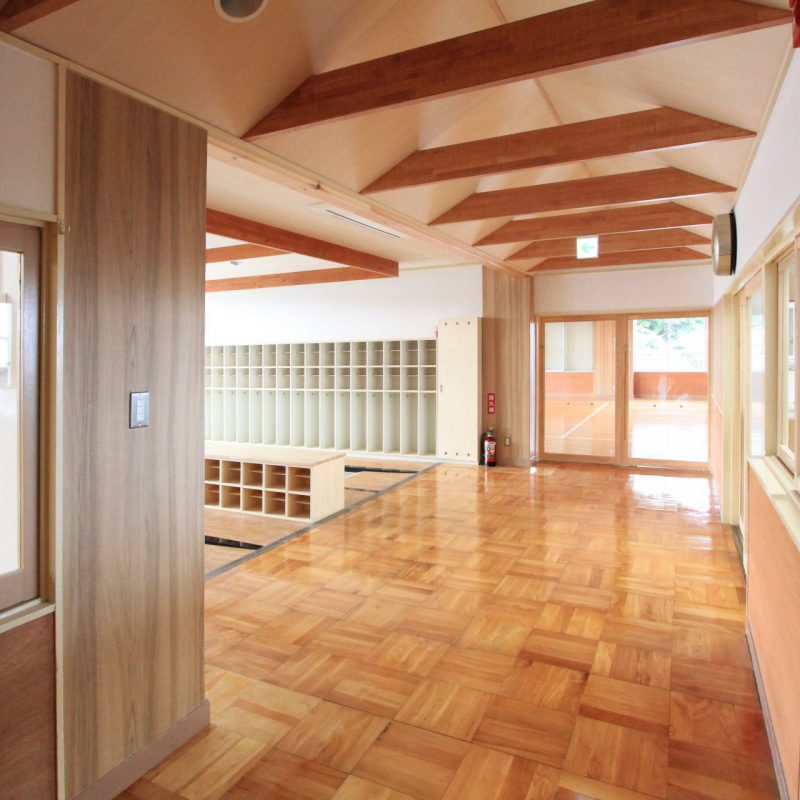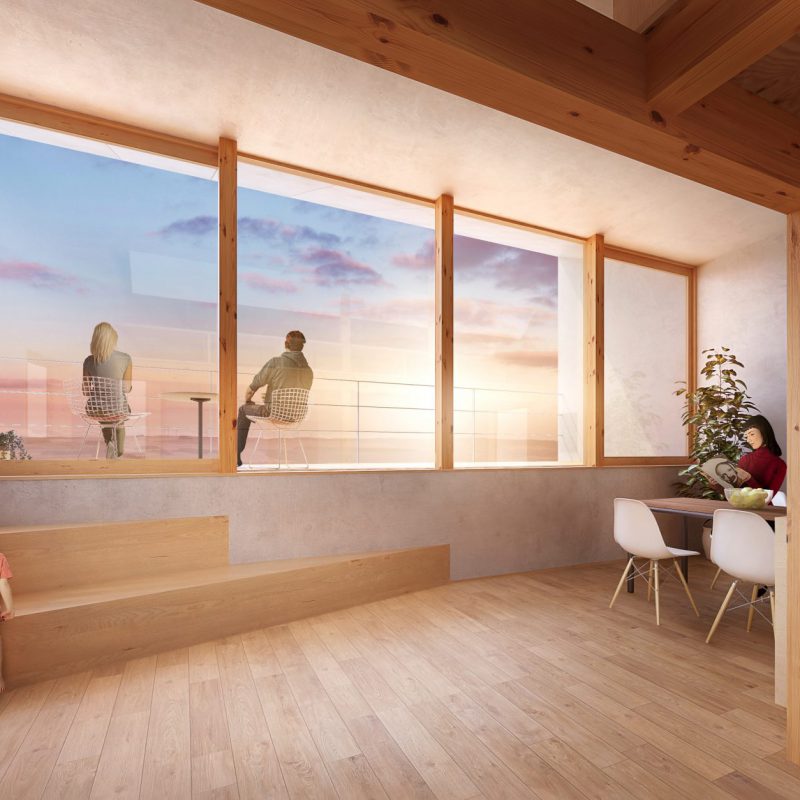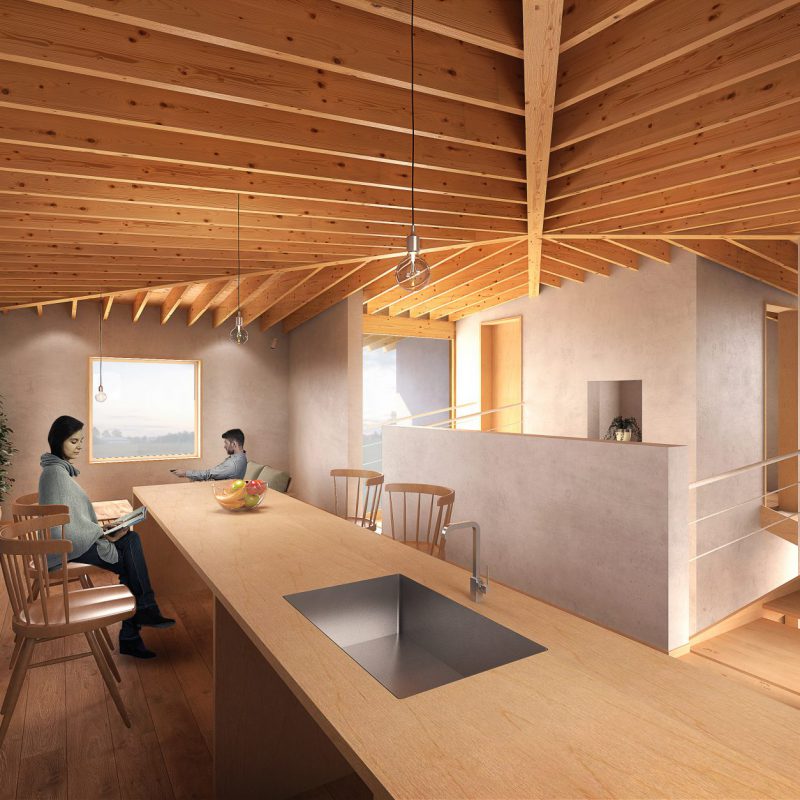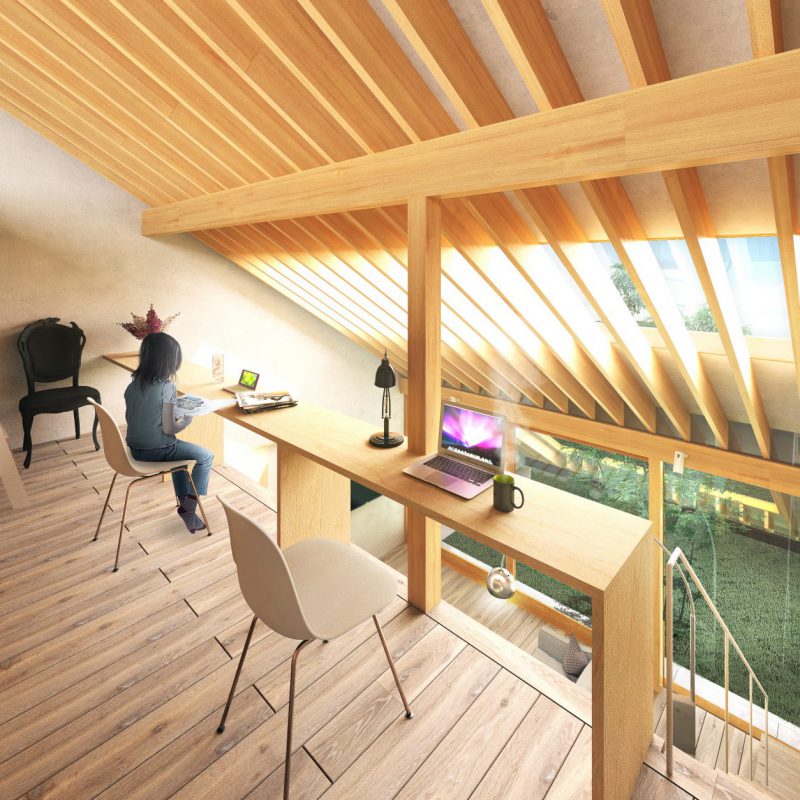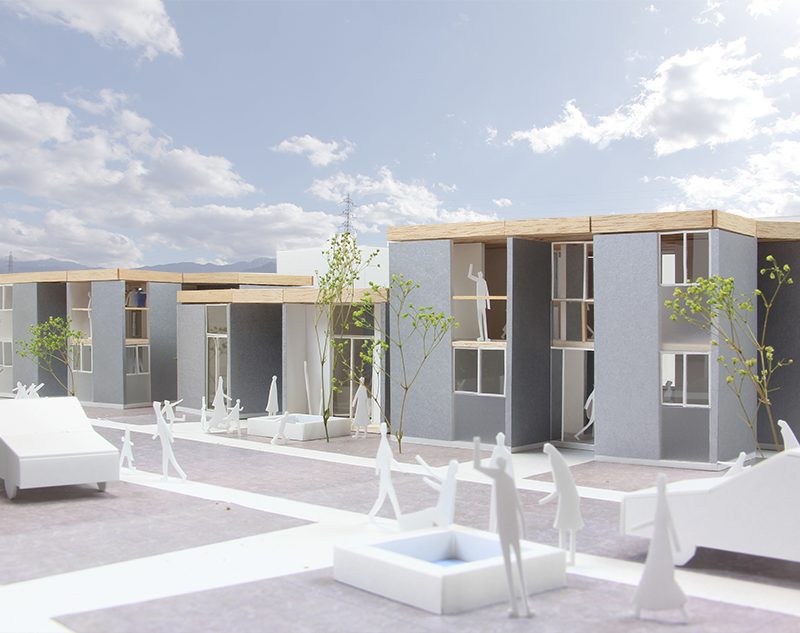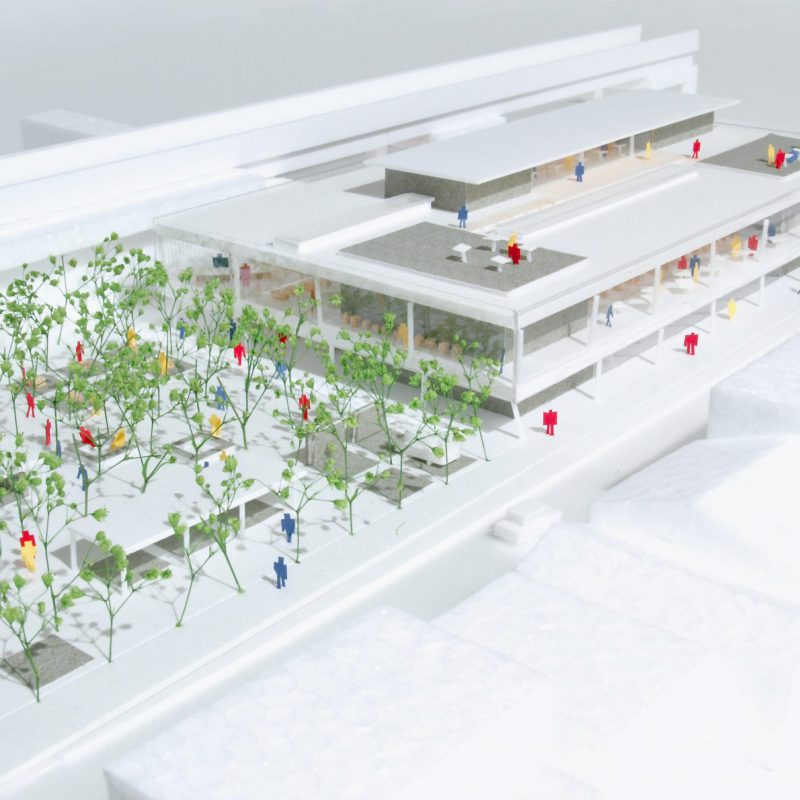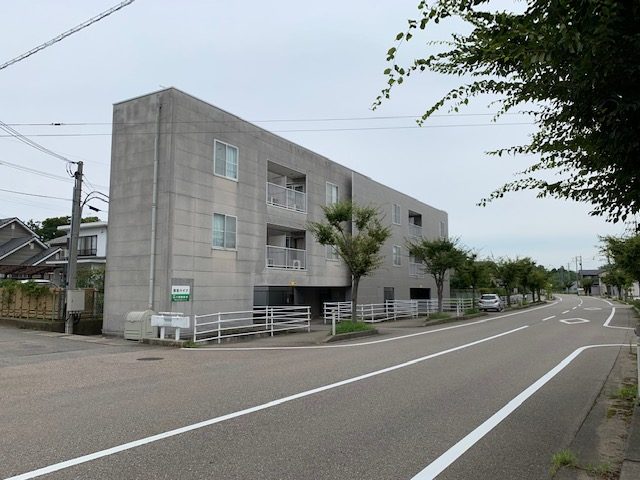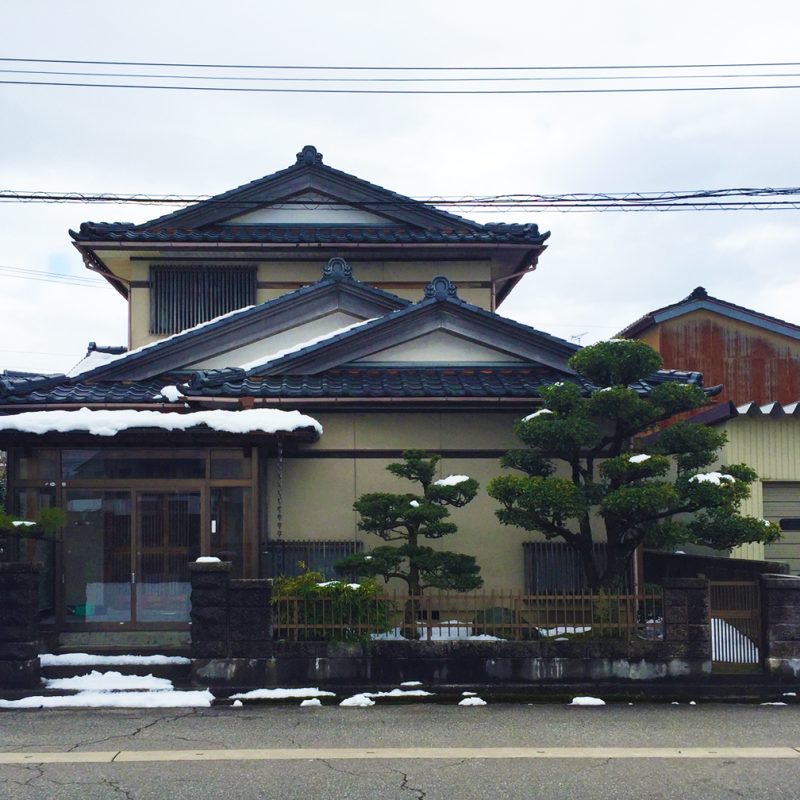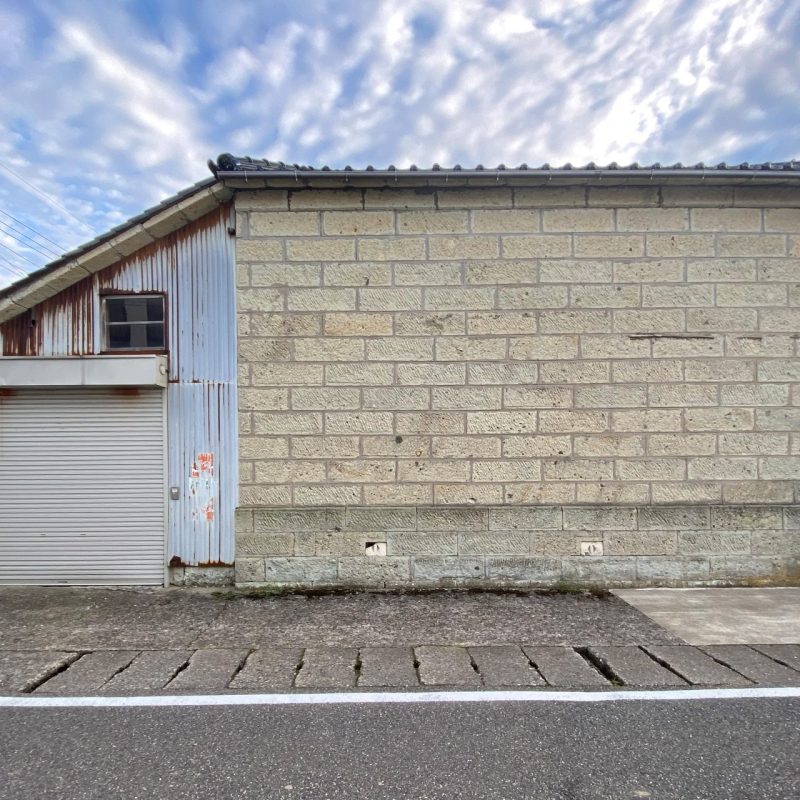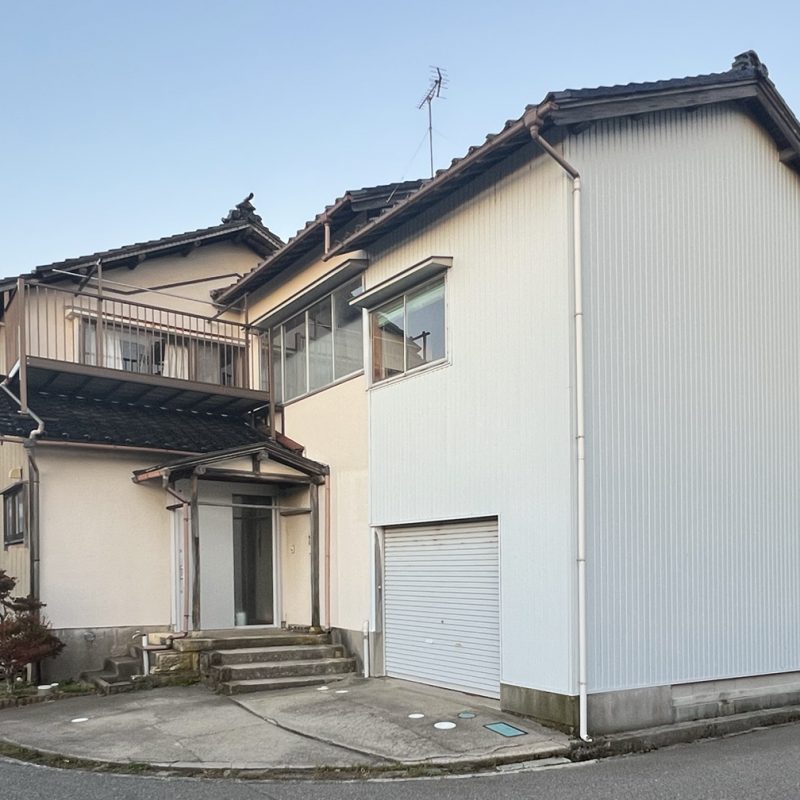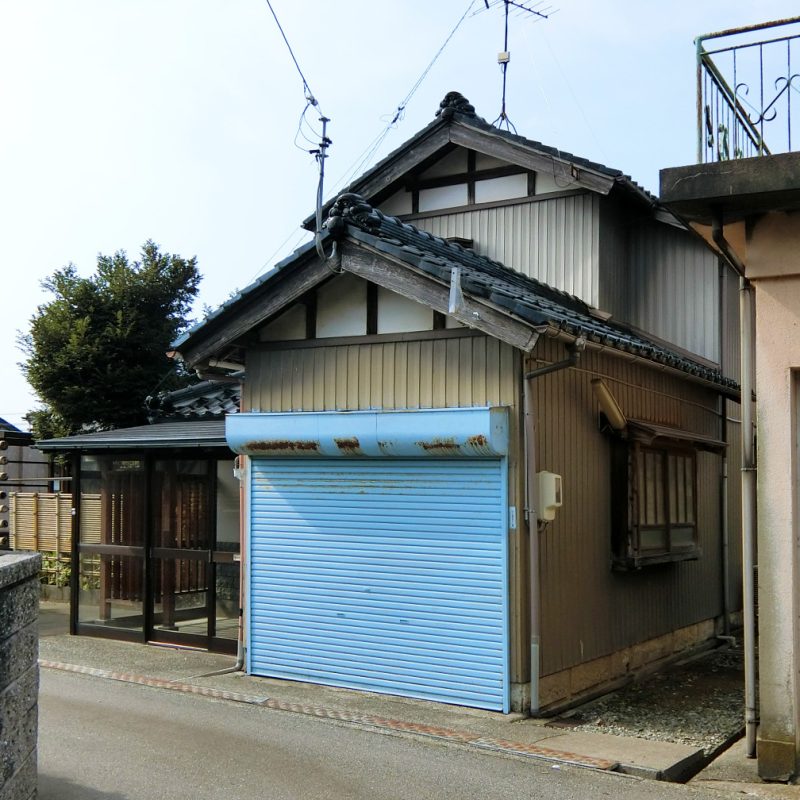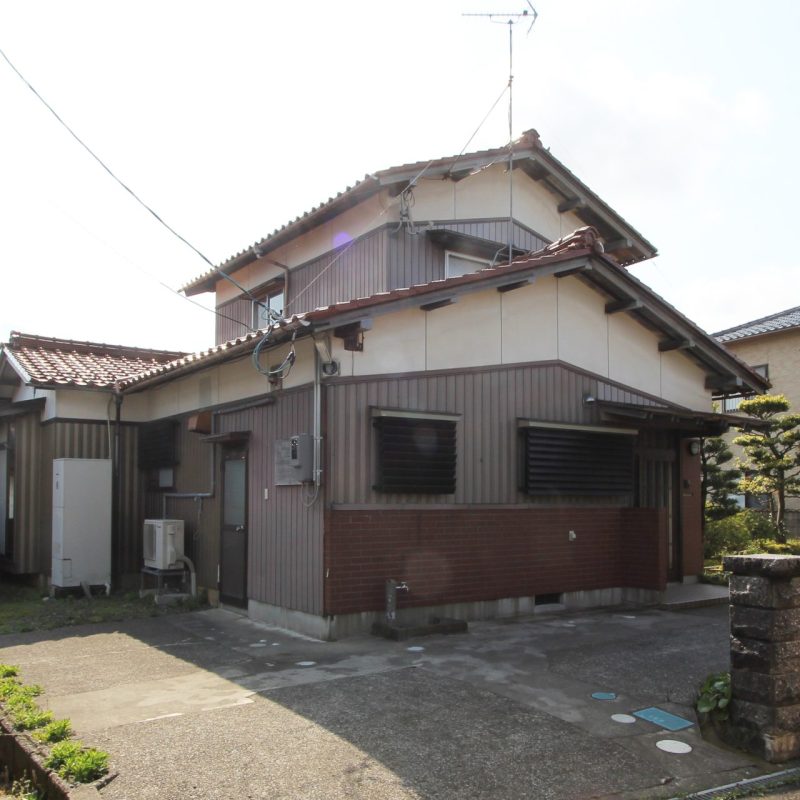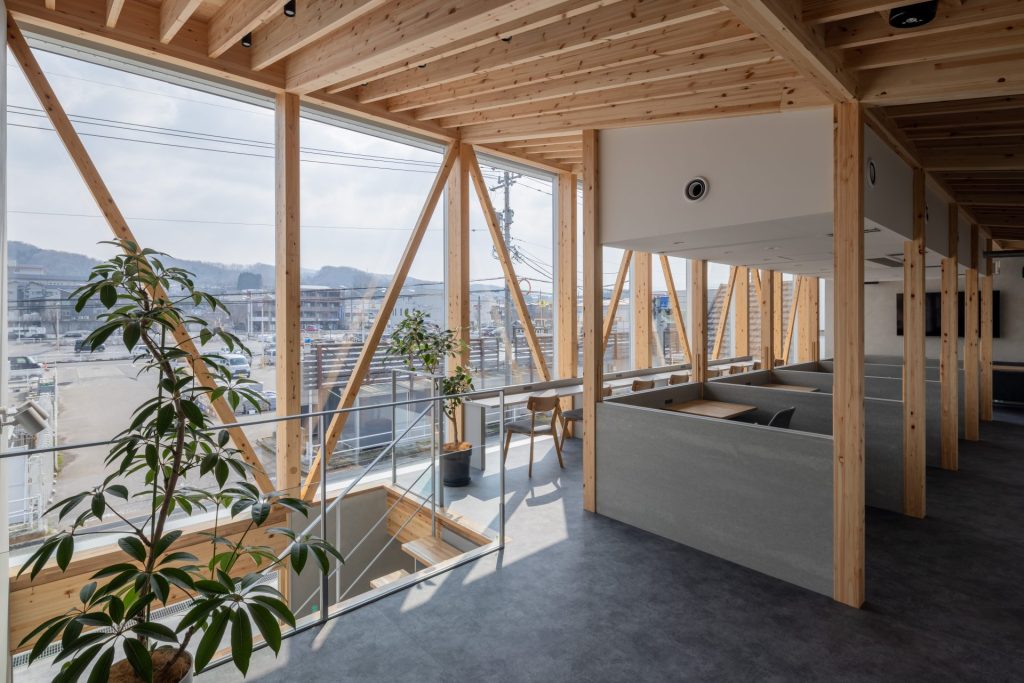
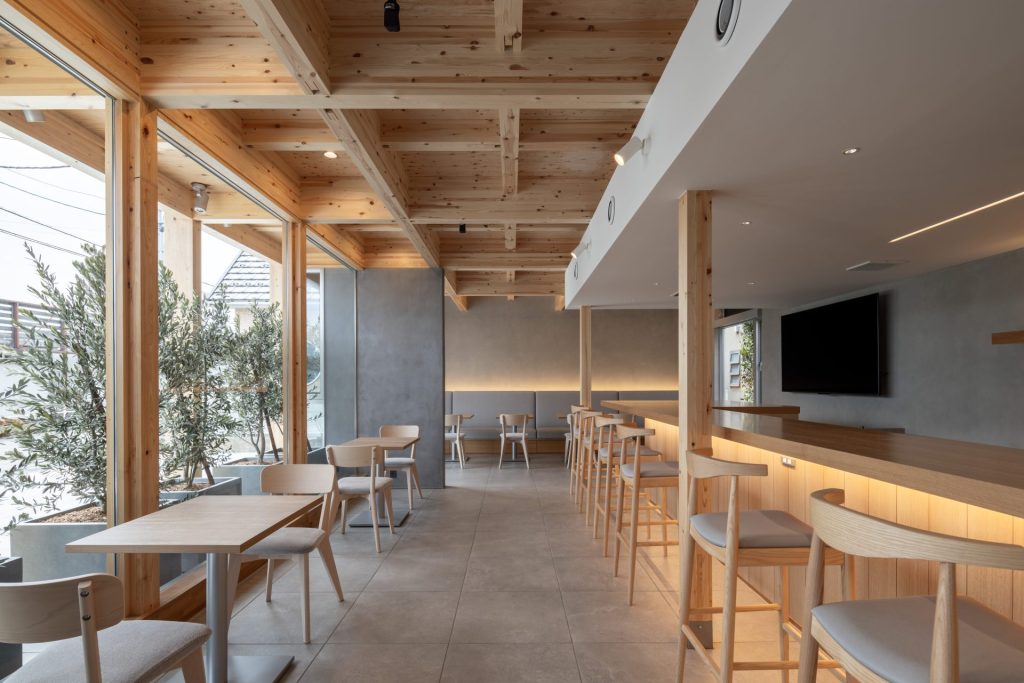
街中に建つ大樹のカフェ
街中に建つ、地域に開かれたカフェの計画である。
施主はこの建物を通して、地域の方々が気軽に訪れる事のできる場の創造と、それに伴う自社ブランドの向上を望んでいた。
建設地は大型施設が建ち並ぶ地方都市の中にあり、雑然とした街の一角にある。
どこか表面的で、自然味の感じられない乾いた都市環境の中で、建築が“その存在をあるがままに表現していく強さ”を持つことで、この地に、生き生きとした状態・場をつくり出すことができるのではないかと考えた。
具体的には、主要構造を木造とし、できる限りその構造躯体・耐力部材に至るまで隠さず表し、それがファサードとして生きるよう計画を行ない、人工的な町の中に大きな枝葉を広げた大樹の集合体のような建築を計画した。
森の中にいるような気持ちの良さと、木々の持つ力強さを体現したような建築である。
エントランスより建物内部に入ると、大樹を支える大きな枝葉のような力強い躯体が天井を覆う。木素材以外は白とグレーのモノトーンの背景を用意し、構造躯体の解像度を高めている。
2階に上がるとその枝葉はより細分化され軽やかさを増す。
この地の持つある種商業的に画一されたデザインコードから建築を脱線させ、自然環境から生成される存在の一部として読み替えていくことで、ここに訪れた人々がより、自然体で緩やかな時間を過ごすことができるよう場を整えた。
また、木を使うことは単に空間形成とは別の意味も持つ。
木を積極的に活用していくことで、「建築行為」自体が都市部での森林資源の新たな需要となり、「木の循環」の一部となる。
木材の中には二酸化炭素のもととなる炭素が固定化されている。
木造建築の中で木の姿をとどめているあいだは炭素貯蔵という点においても建築自体が第2の森林、都市の森であるとも考えられる。
本建物では、地元野菜を使ったカフェメニューを楽しむことができると同時に、地域の人々に対するレンタルスペースも内包している。
これら施設を利用する人々をおおらかに包みこみながらも、この建物が次世代につながる建築のあり方、企業と社会との関わり方、そして人と都市、自然との関わり方、その全てのつながりを考えるきっかけの場となることを願い、本建物を計画した。
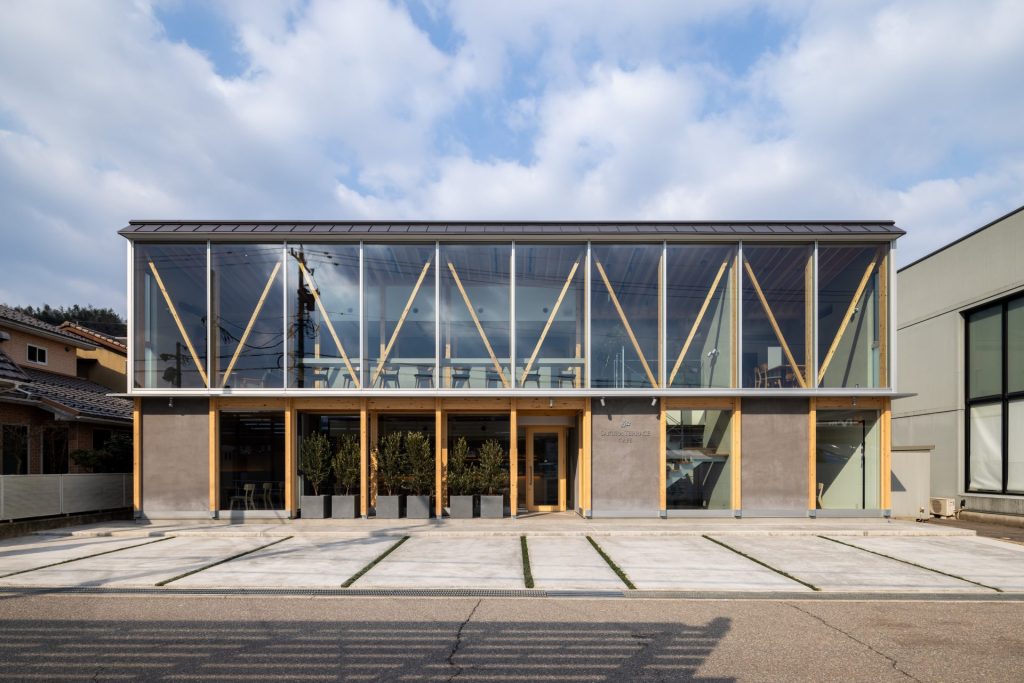
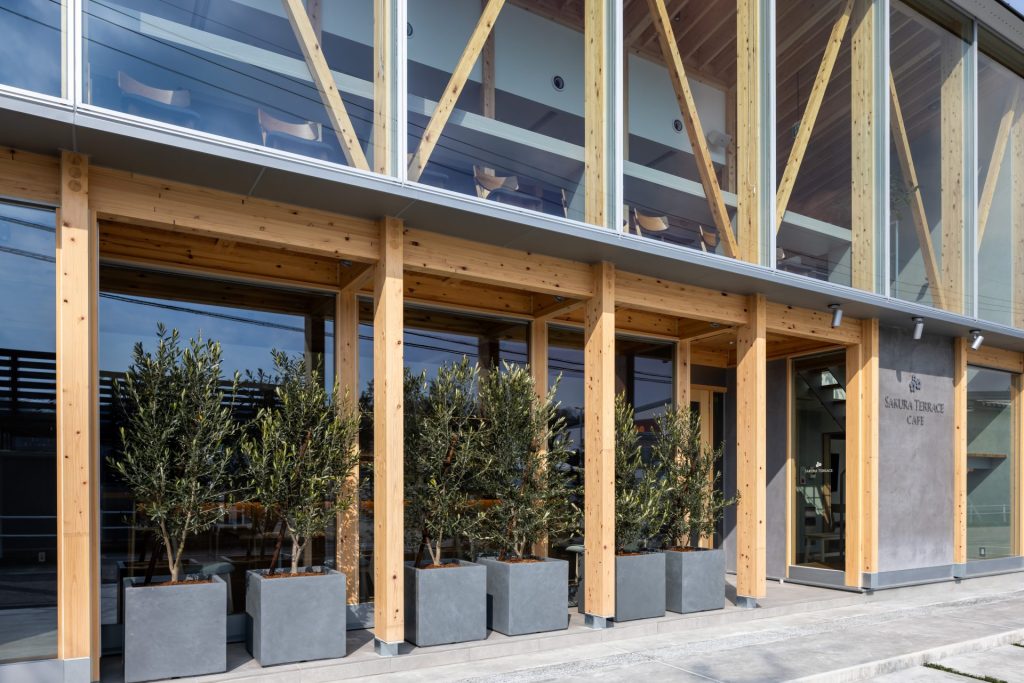
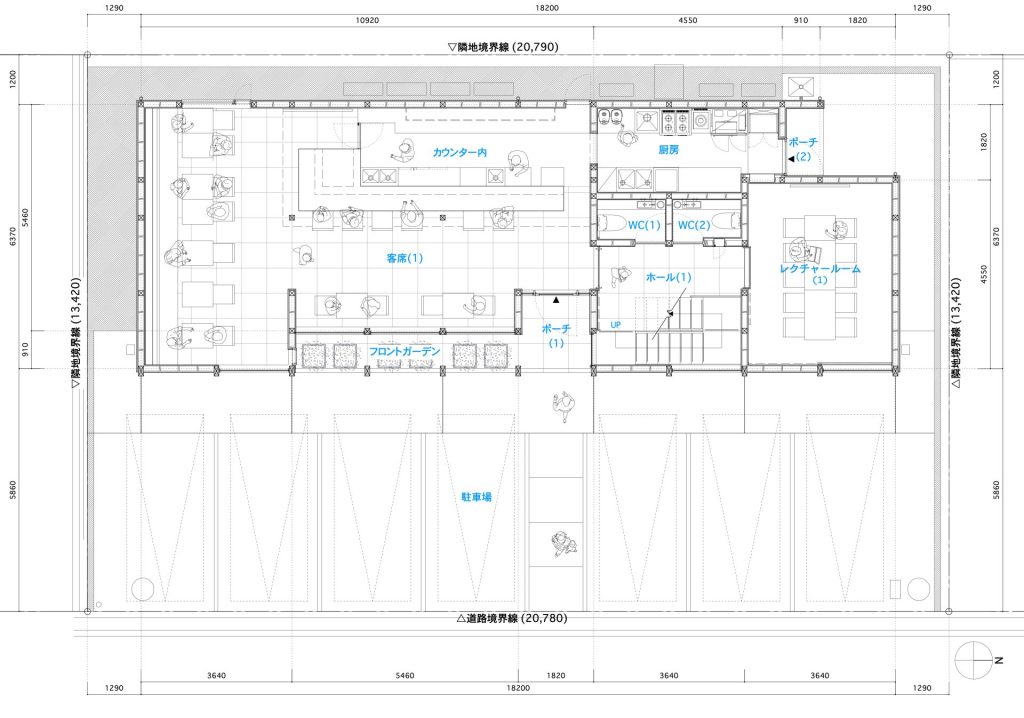
1st floor
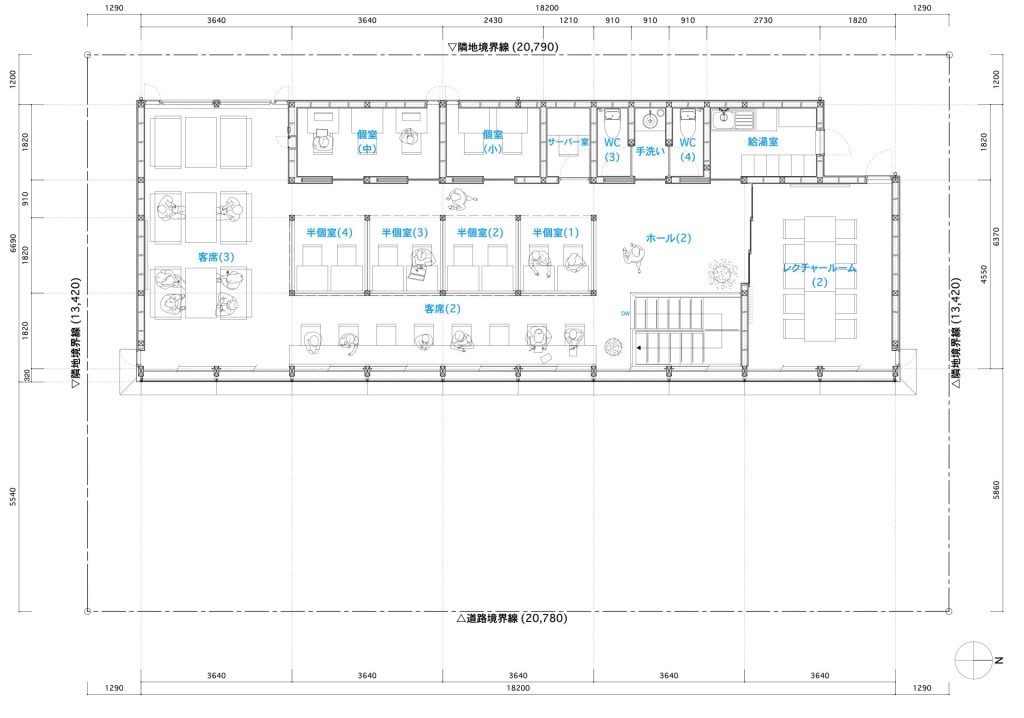
2nd floor
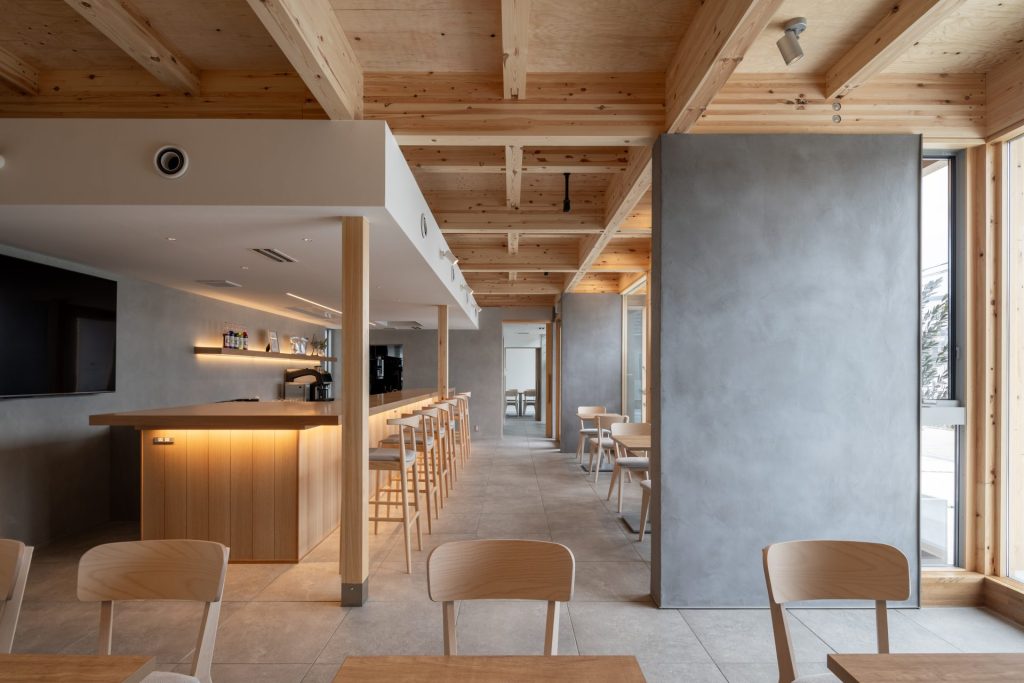
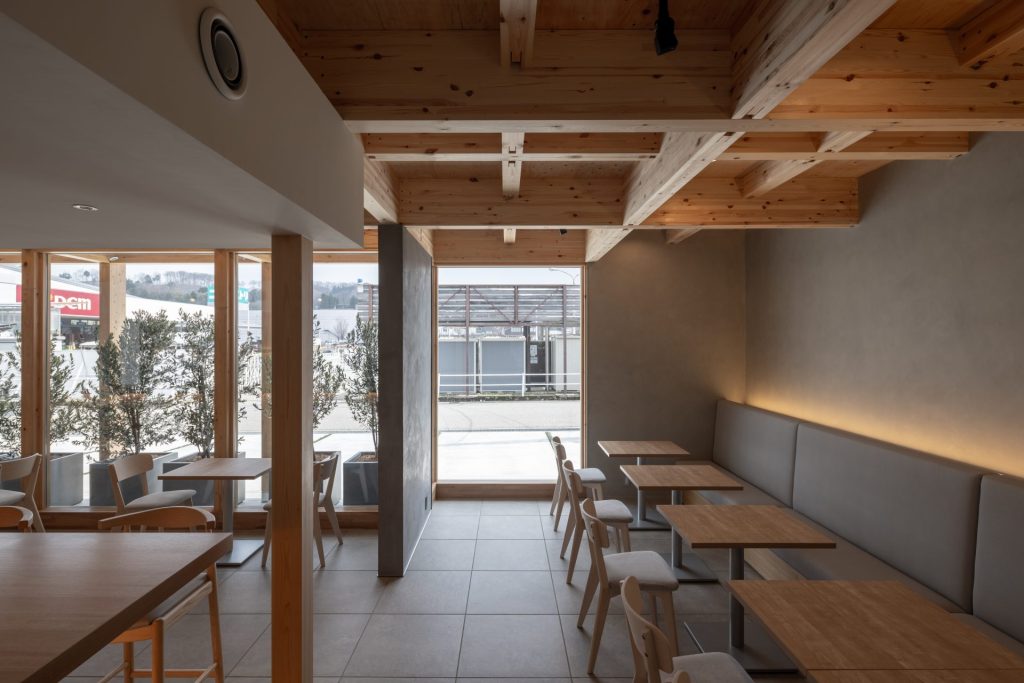
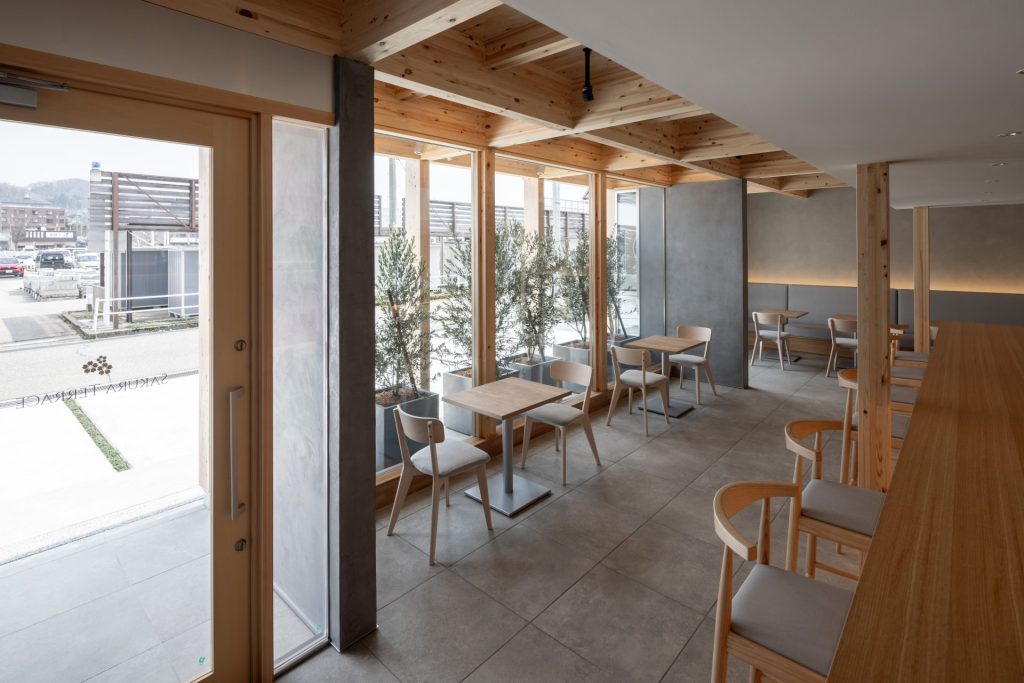
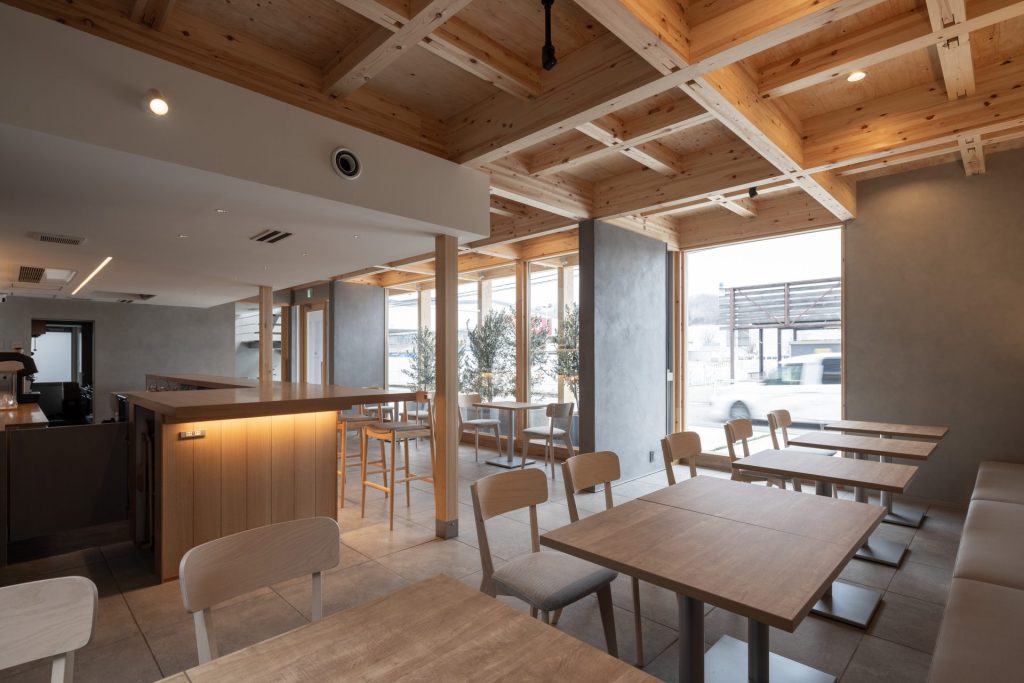
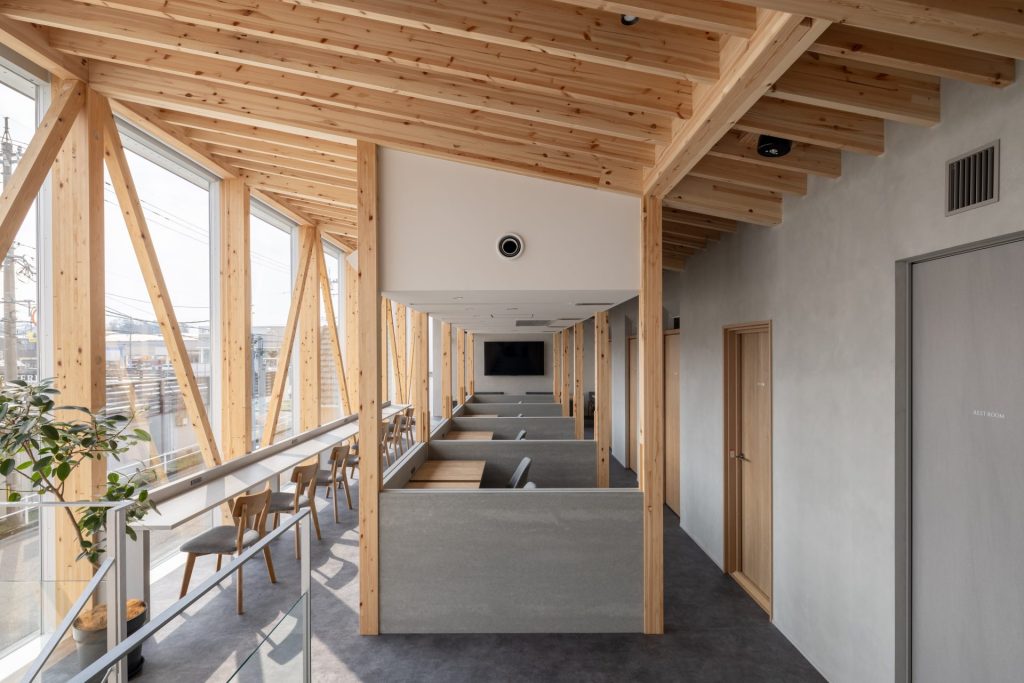
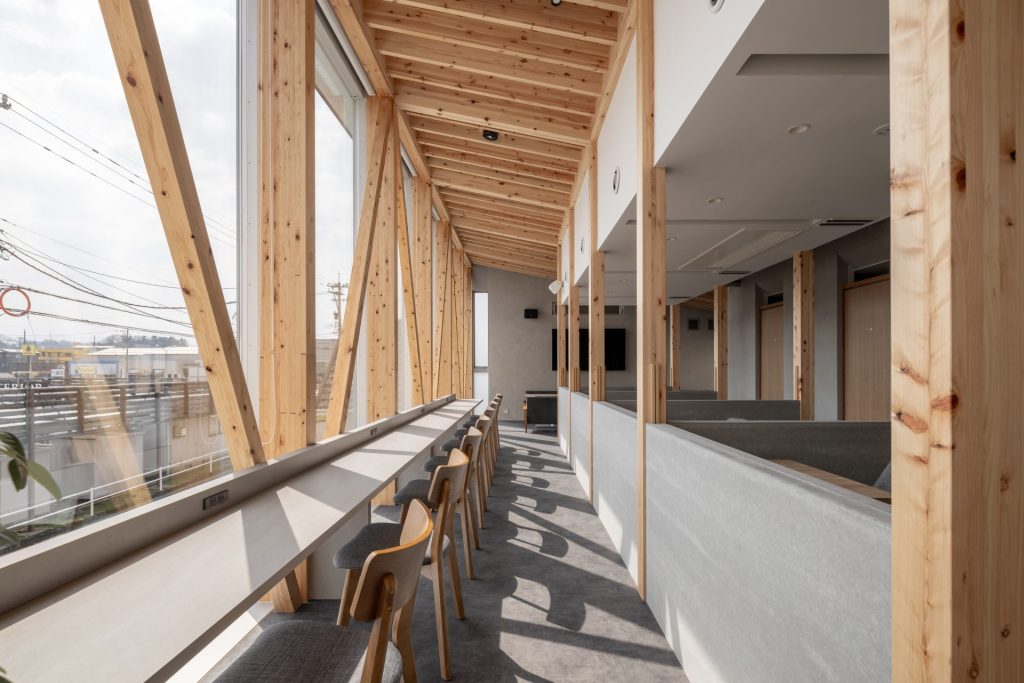
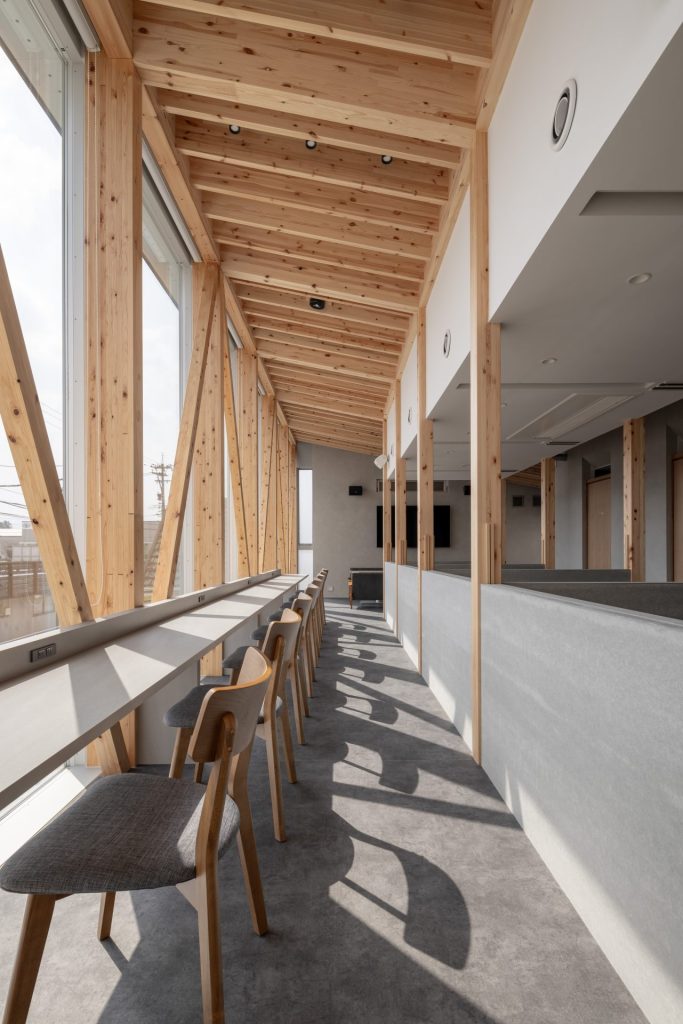
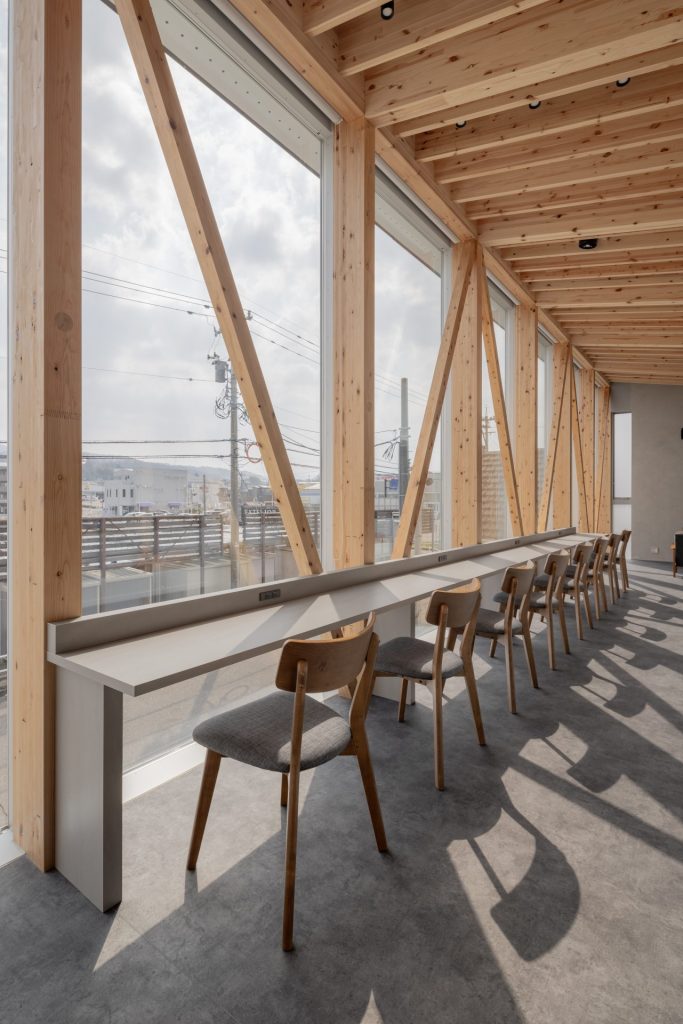
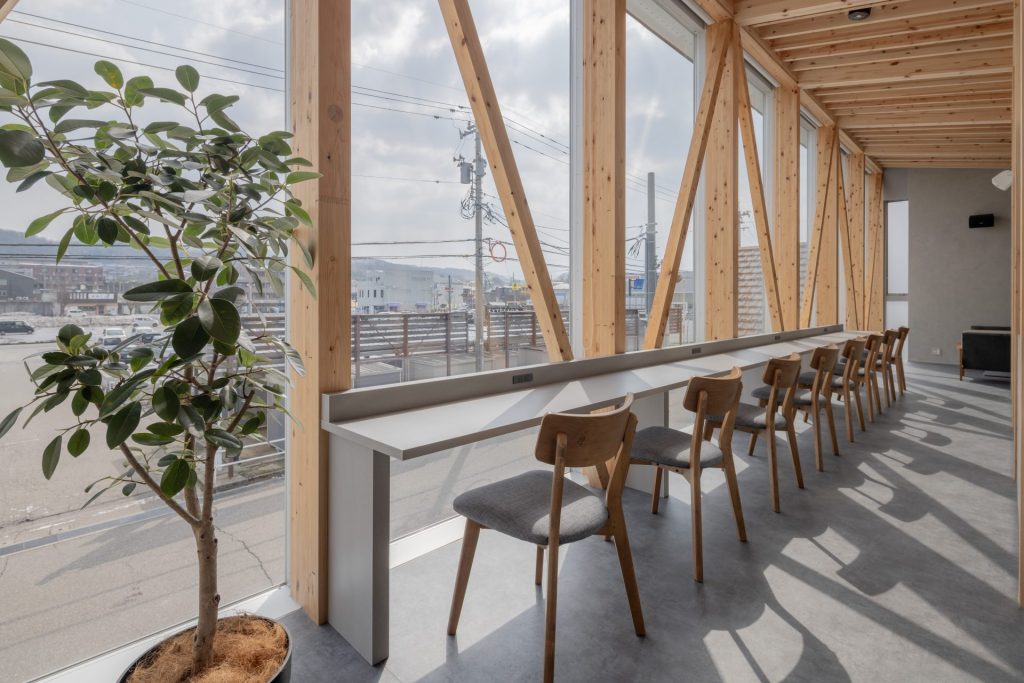
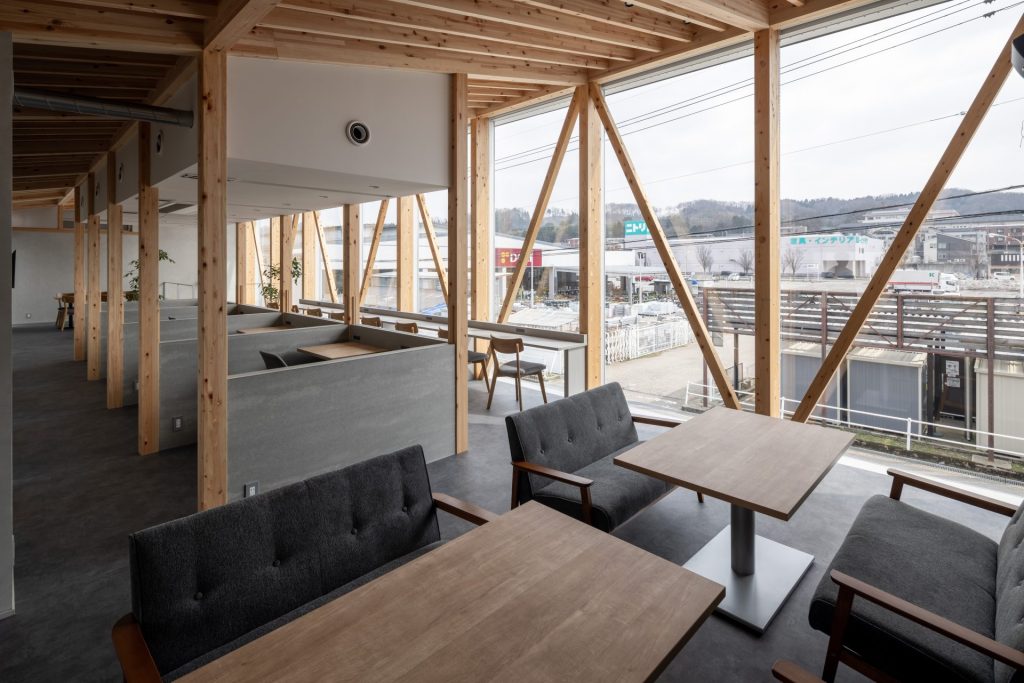
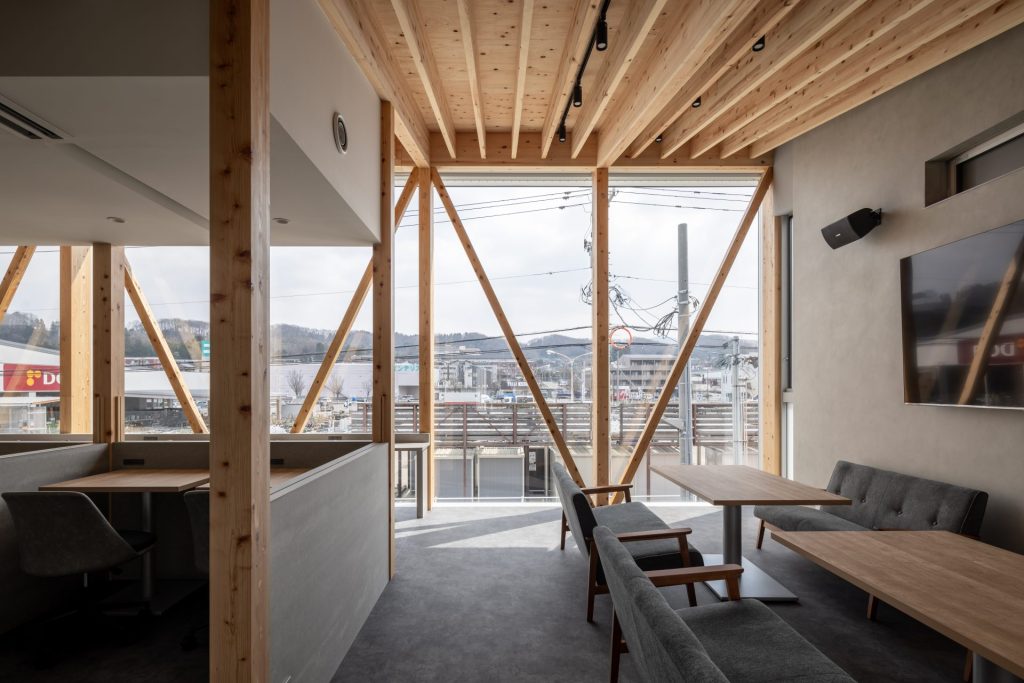
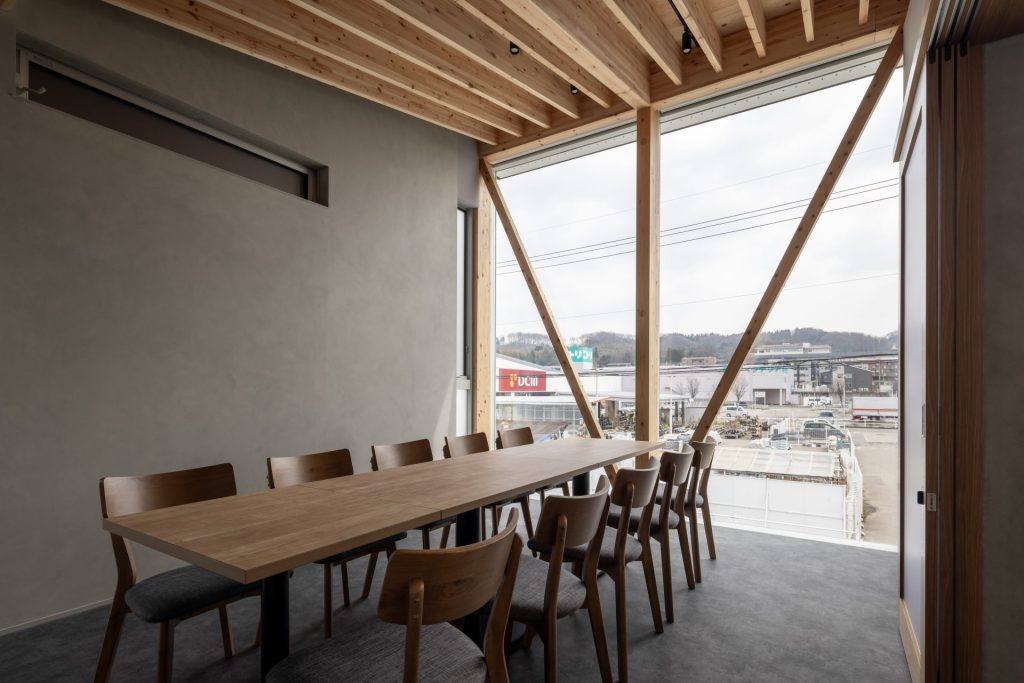
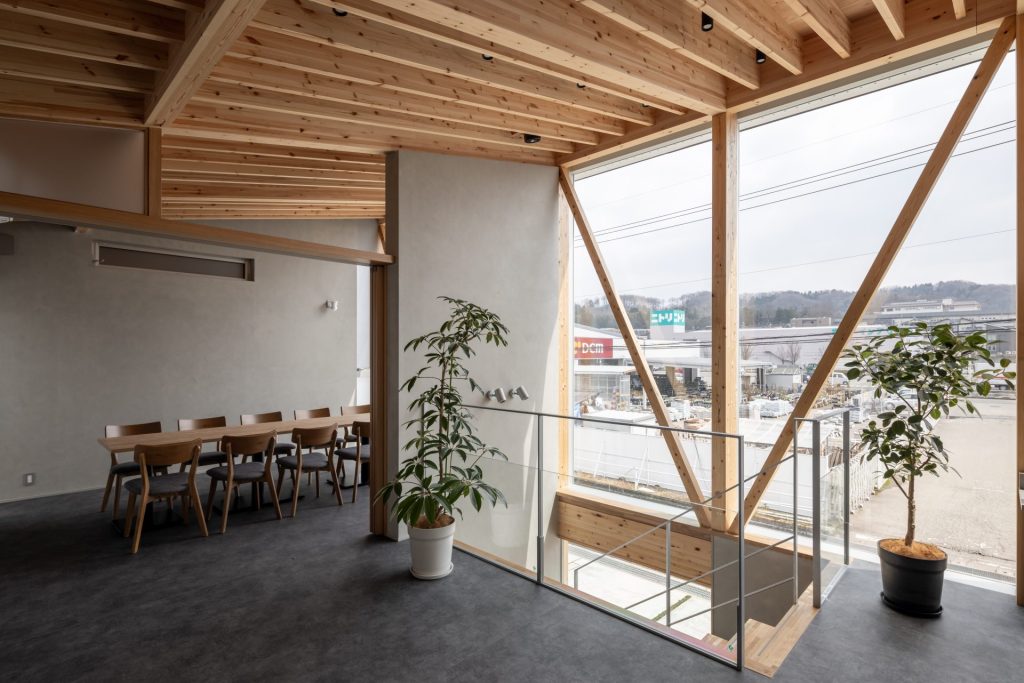
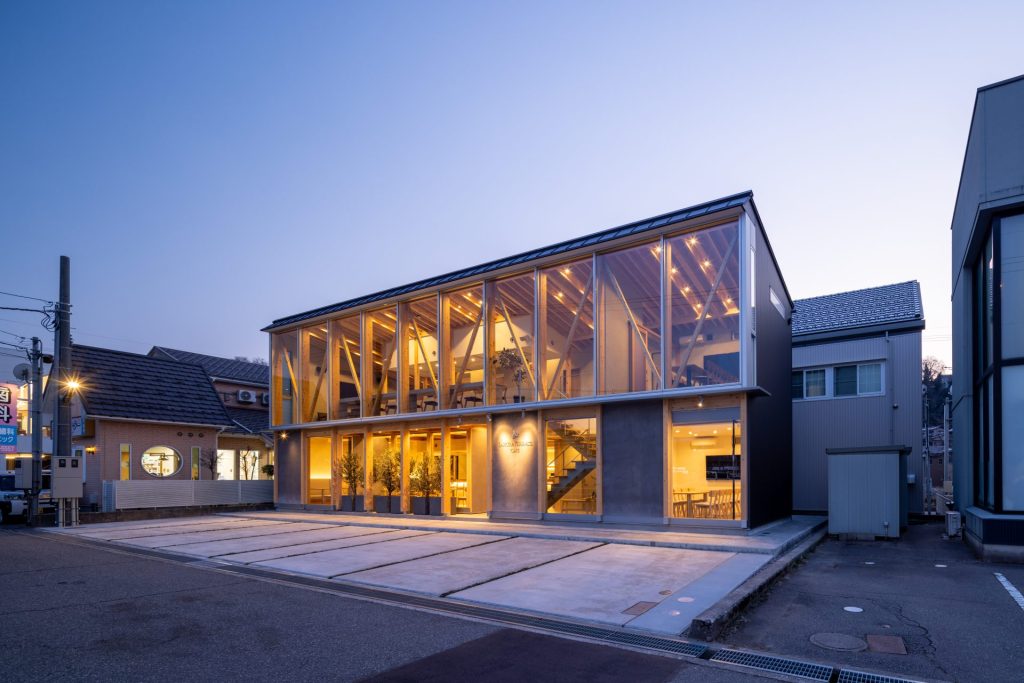
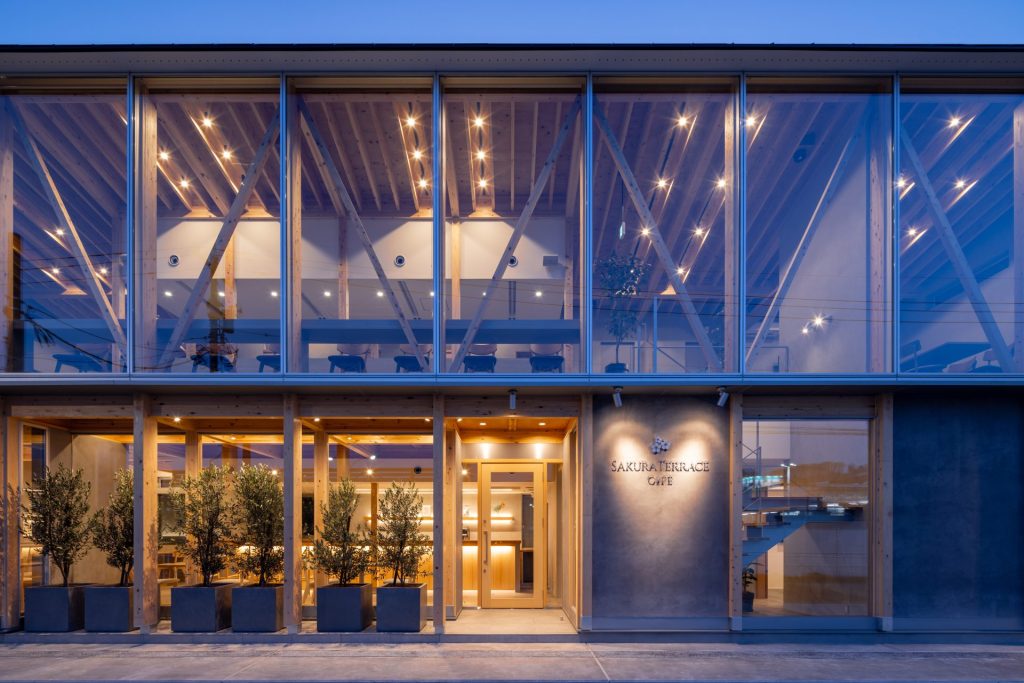
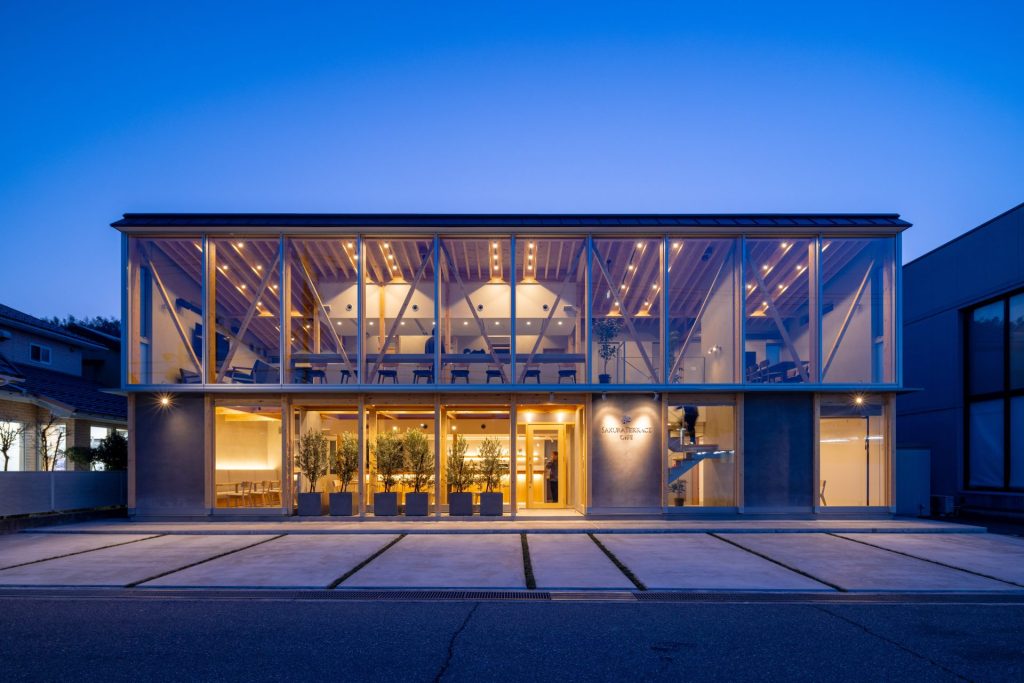
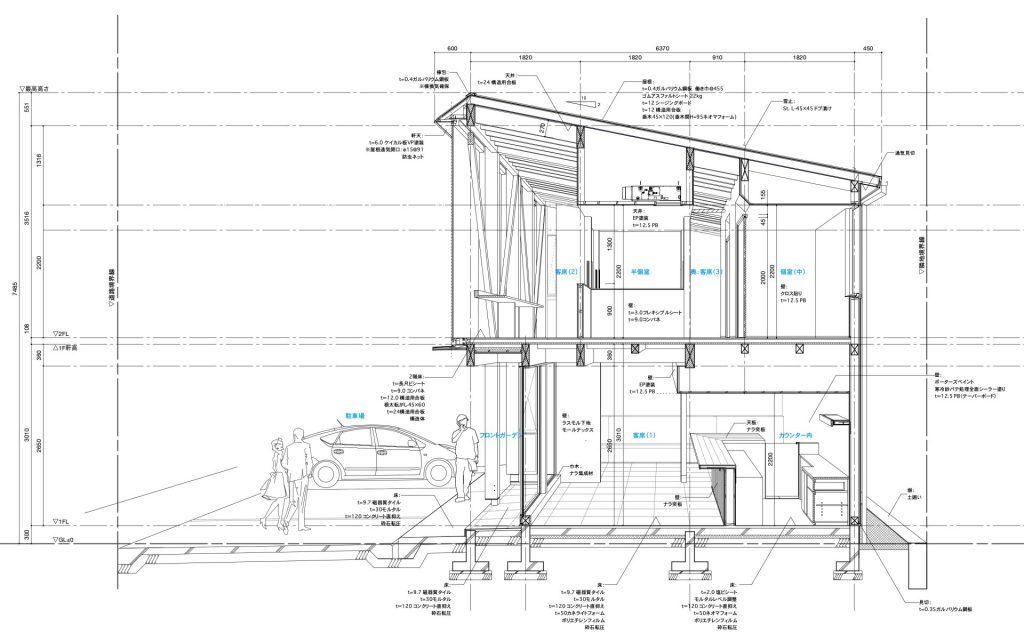
Photo:MARK AND PORTER PHOTOGRAPHY
Collab:toit-design
A café with a large tree in the middle of town
This is a plan for a café that will be built in the middle of town and open to the local community.
The client wanted to create a place where local people can easily visit and improve their own brand through this building.
The construction site is located in a cluttered corner of a regional city lined with large facilities.
In this somewhat cold, dry urban environment that lacks naturalness, the architect thought that architecture with the strength to express its existence as it is could create a lively state and place in this place.
The architecture embodies the pleasant feeling of being in a forest and the strength of trees.
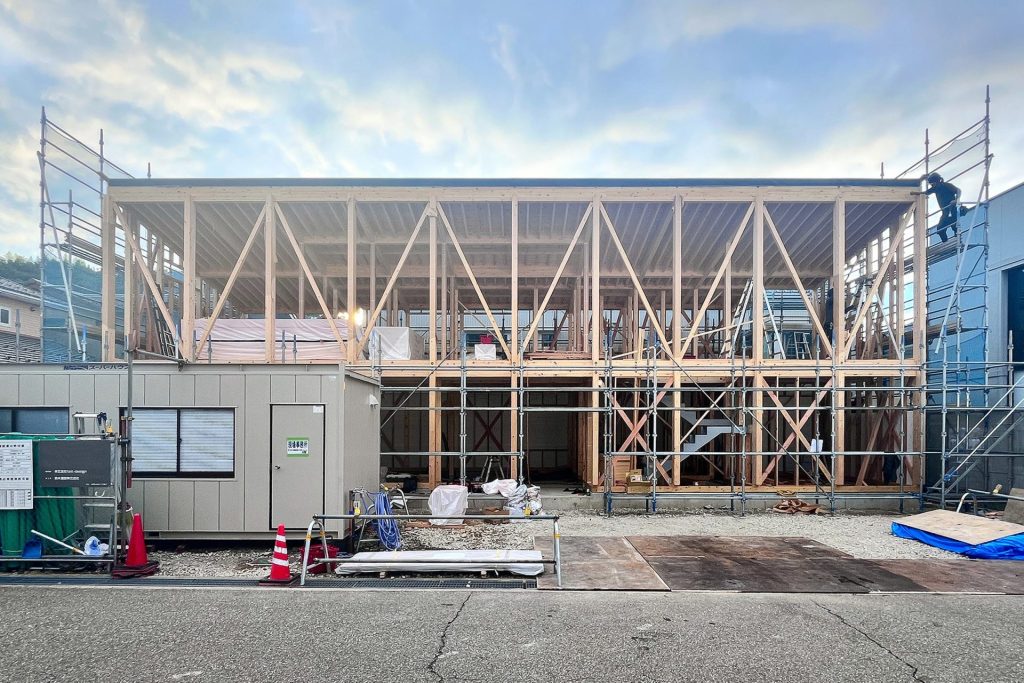
Specifically, the main structure is constructed of wood, and the structural framework and strength-bearing members are left as much as possible uncovered, and the plan was made so that they would live as the facade, creating an architecture that resembles a collection of large trees with large branches and leaves in the middle of an artificial town.
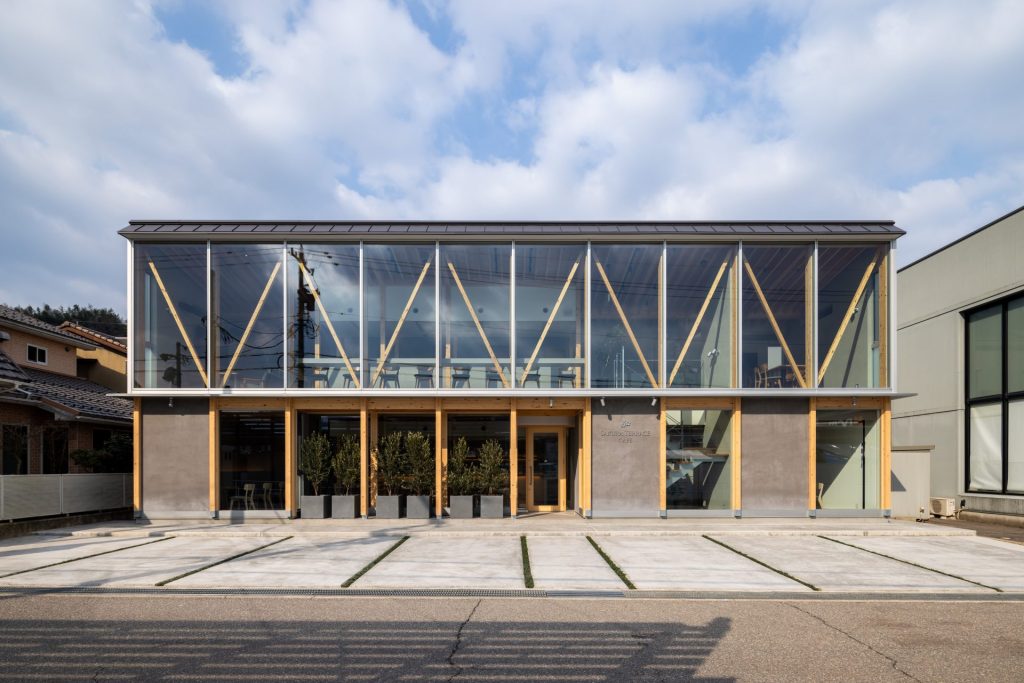
Entering the building from the entrance, the ceiling is covered with a powerful structure like the large branches supporting a large tree. Aside from the wood, the background is a monotone of white and gray, enhancing the abstraction of the structural frame.
Upon going up to the second floor, the branches become more subdivided and lighter.
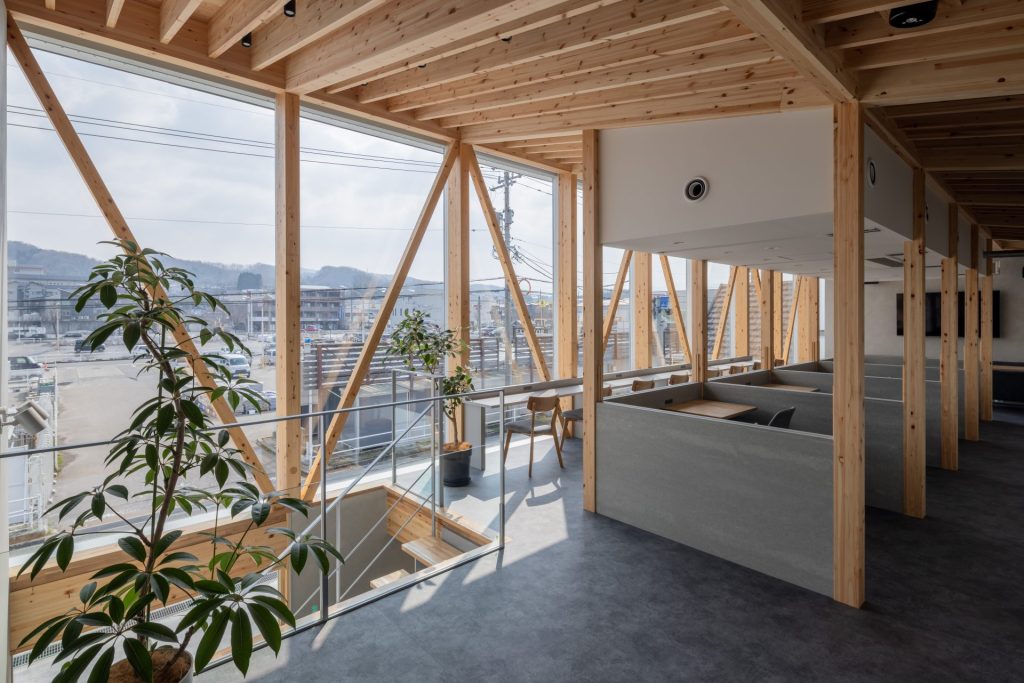
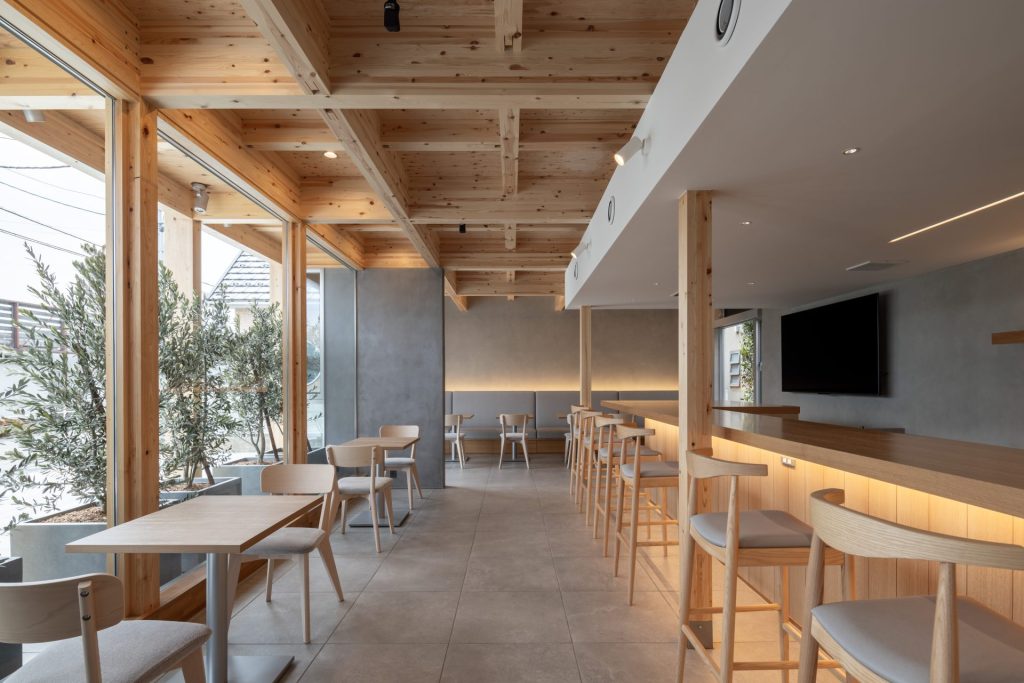
By derailing the architecture from the somewhat commercially uniform design code of this place and reinterpreting it as part of the natural environment, we have created a space where visitors can spend a more natural and relaxed time.
The use of wood also has a meaning other than simply creating space.
By actively using wood, the “act of construction” itself becomes a new demand for forest resources in urban areas that already benefit from forests, and becomes part of the “wood cycle.”
Carbon, which is the source of carbon dioxide, is fixed in wood.
As long as the wood remains in the wooden building, the building itself can be considered a second forest, an urban forest, in terms of carbon storage as well.
In this building, you can enjoy a cafe menu using locally grown vegetables, and it also includes rental space for local residents. We planned this building with the hope that it will be a place that warmly welcomes the people who use the facility, and that it will also serve as an opportunity to think about the nature of architecture that will connect to the next generation, the relationship between companies and society, and the relationship between people, cities, and nature, and all of these connections.
